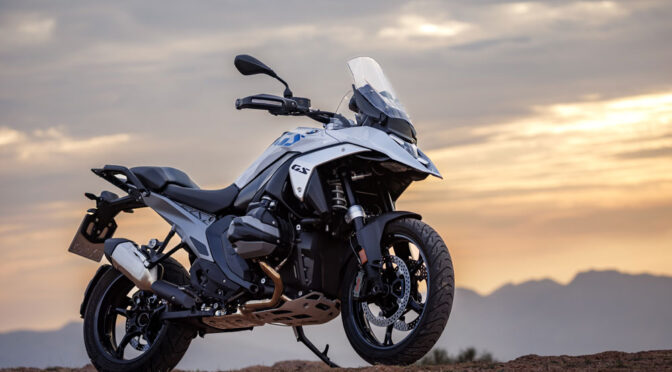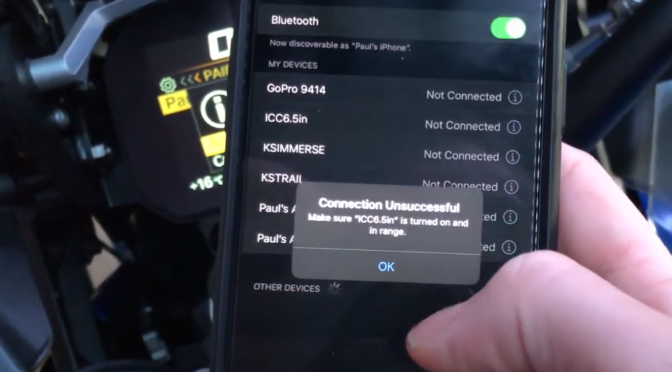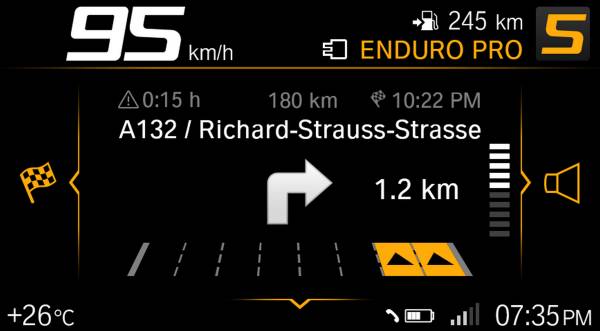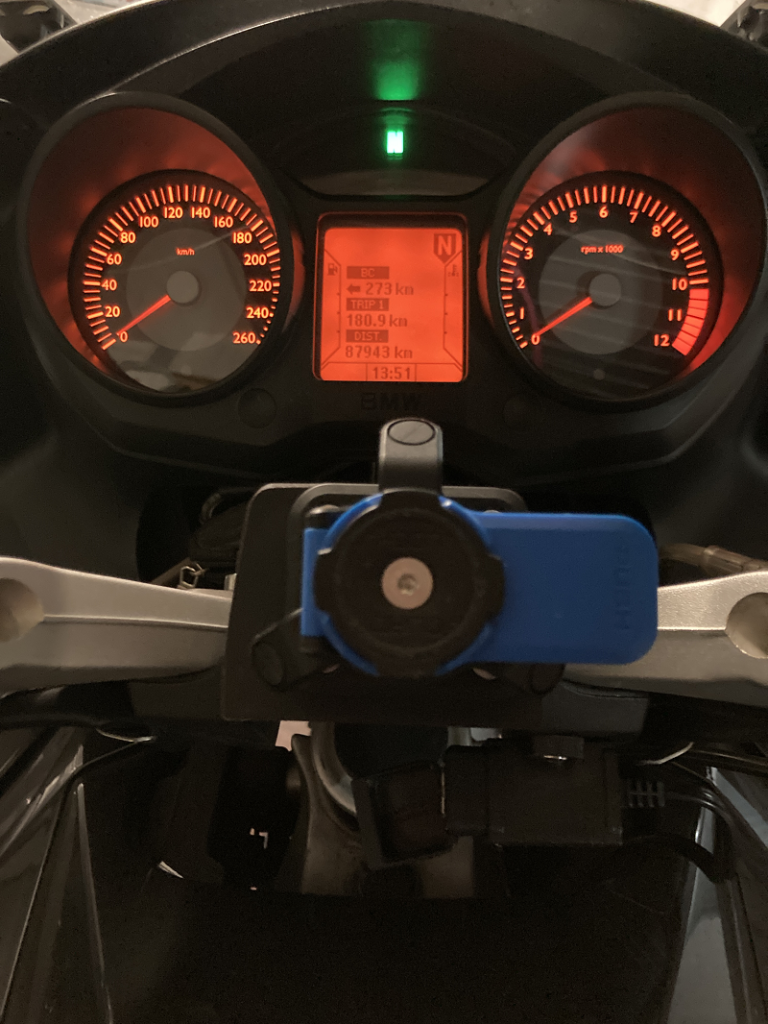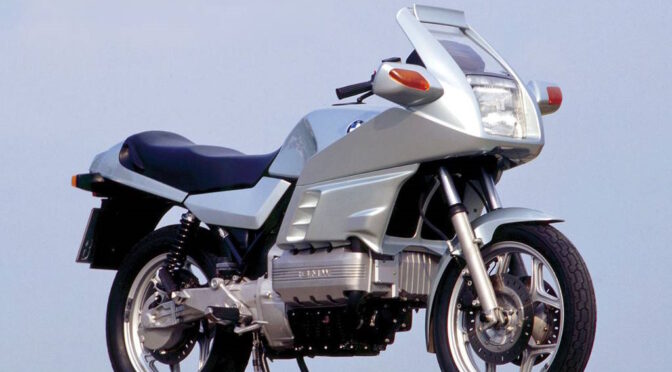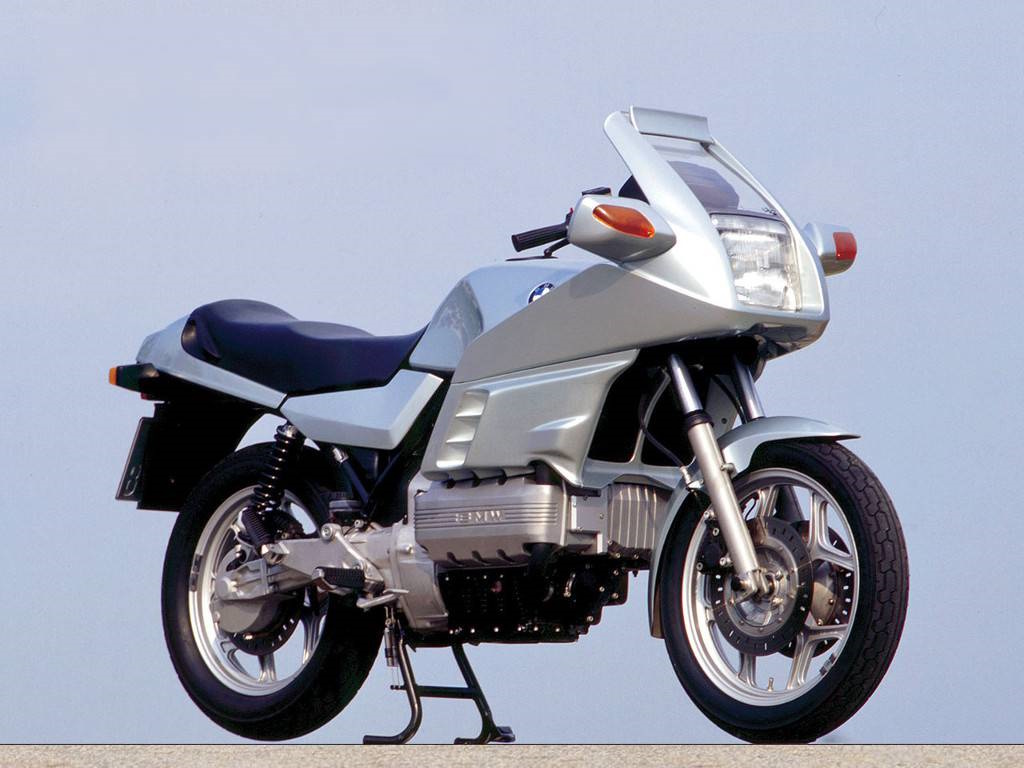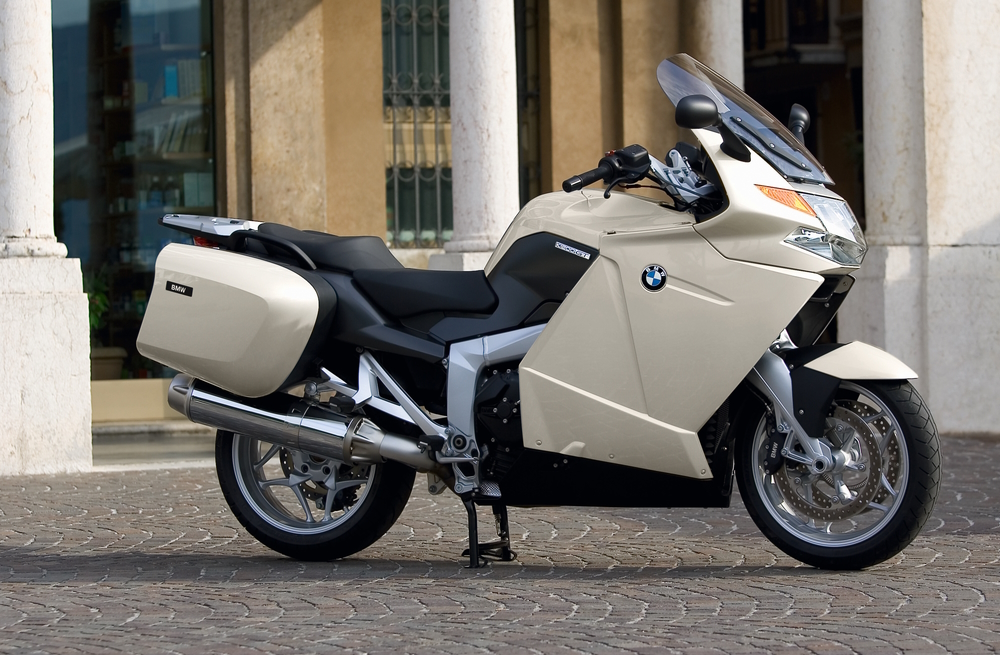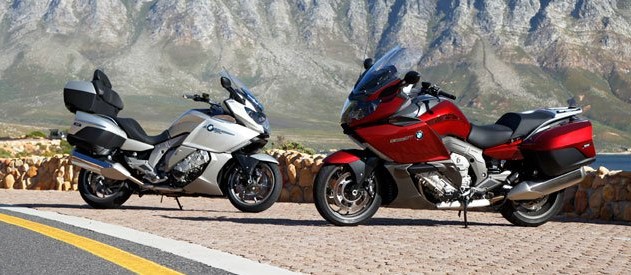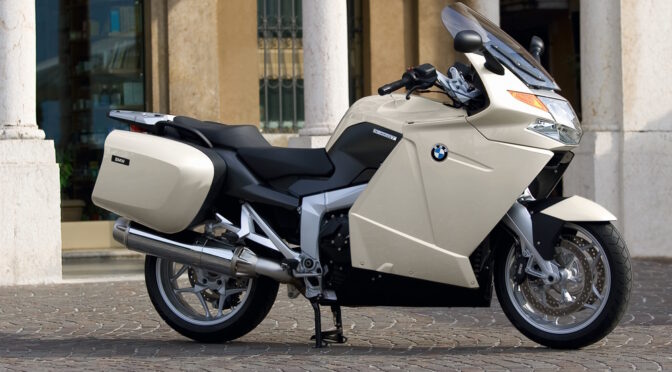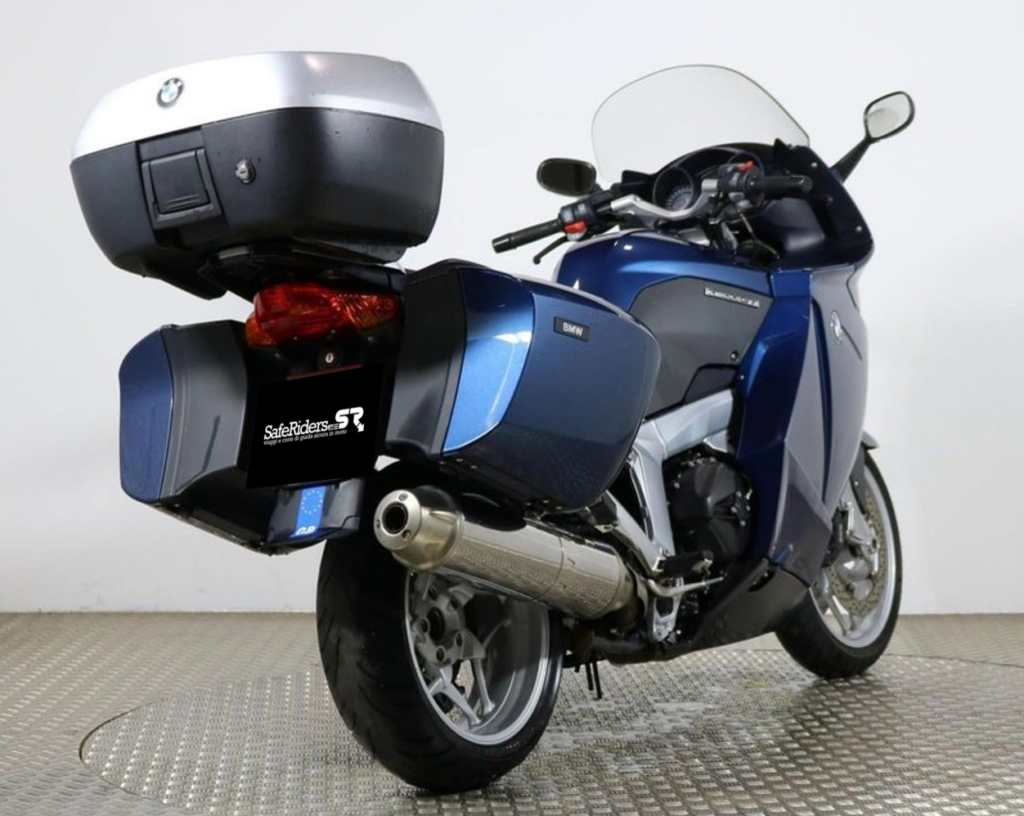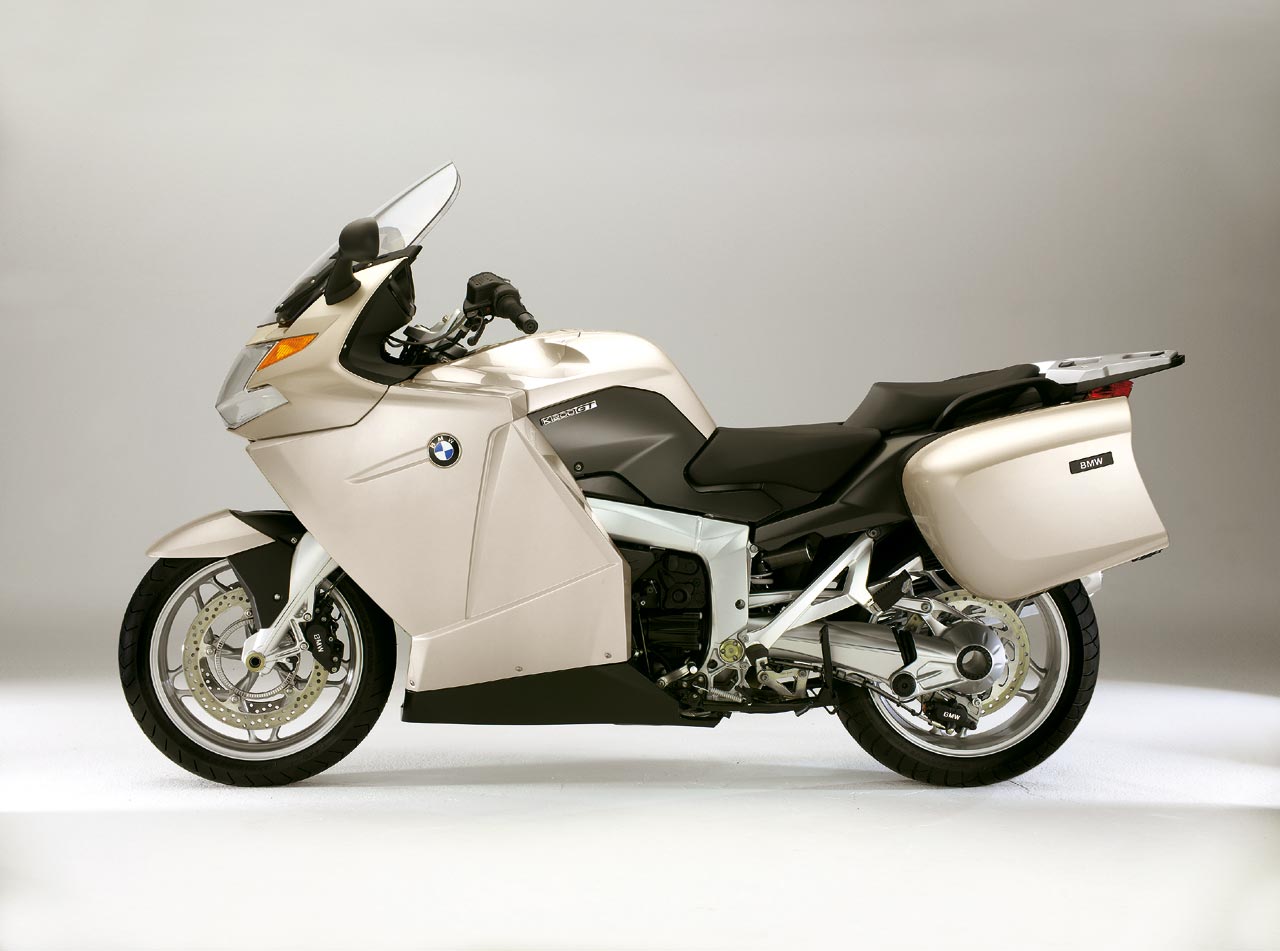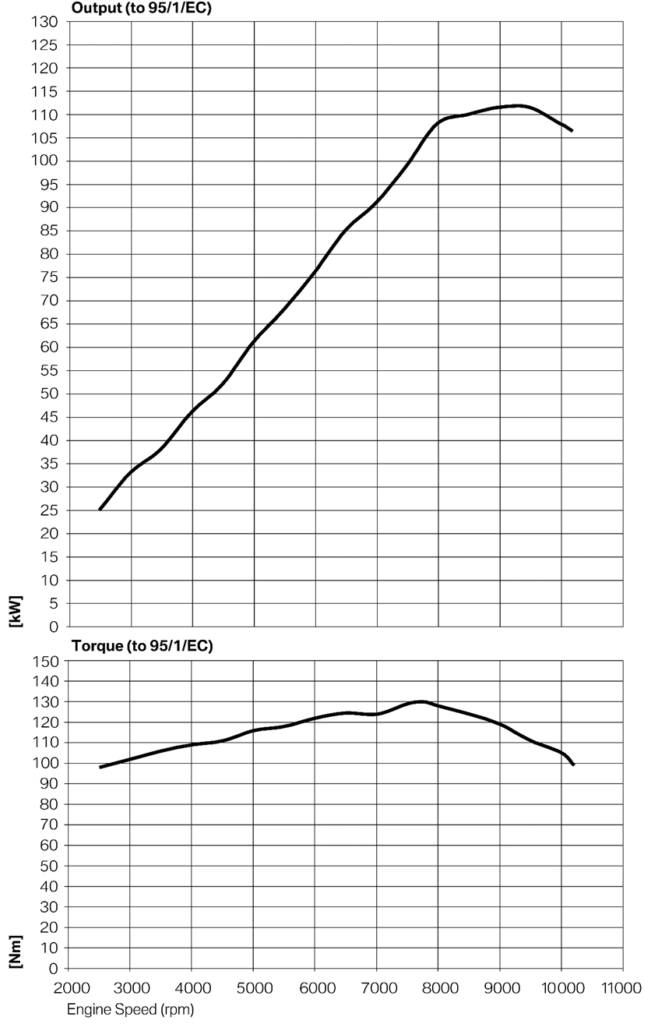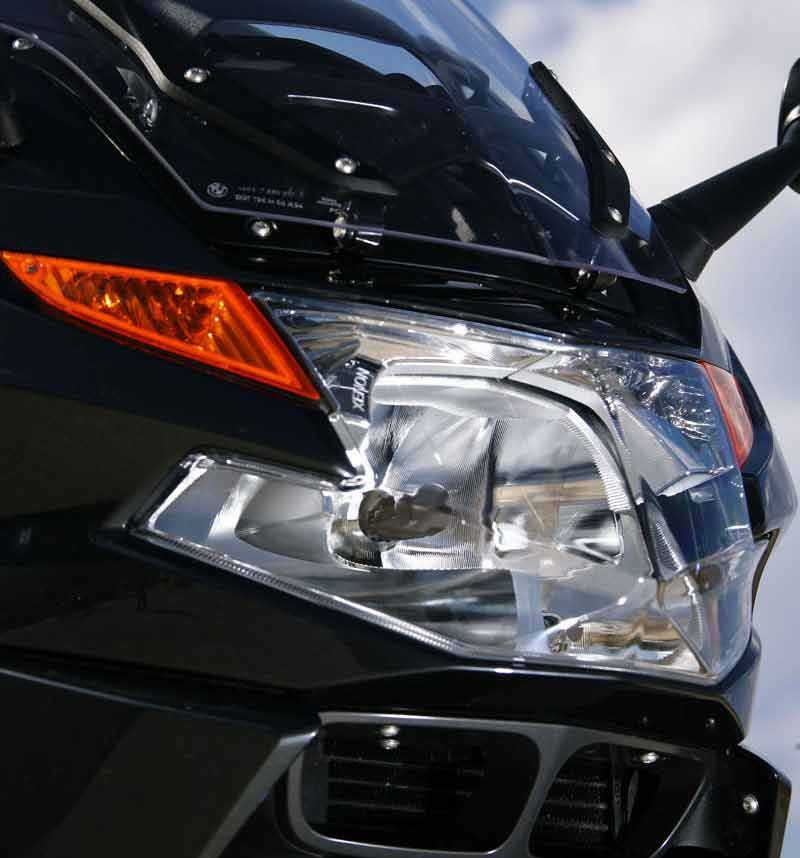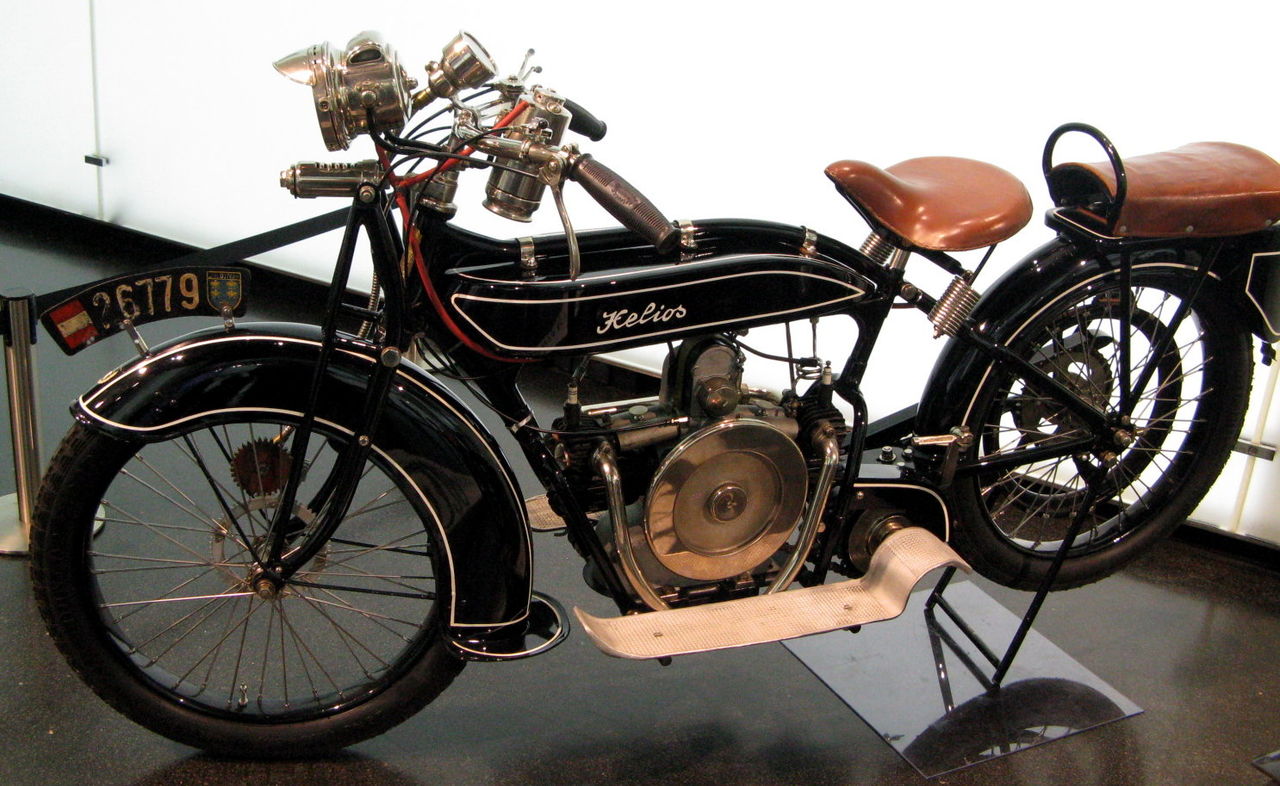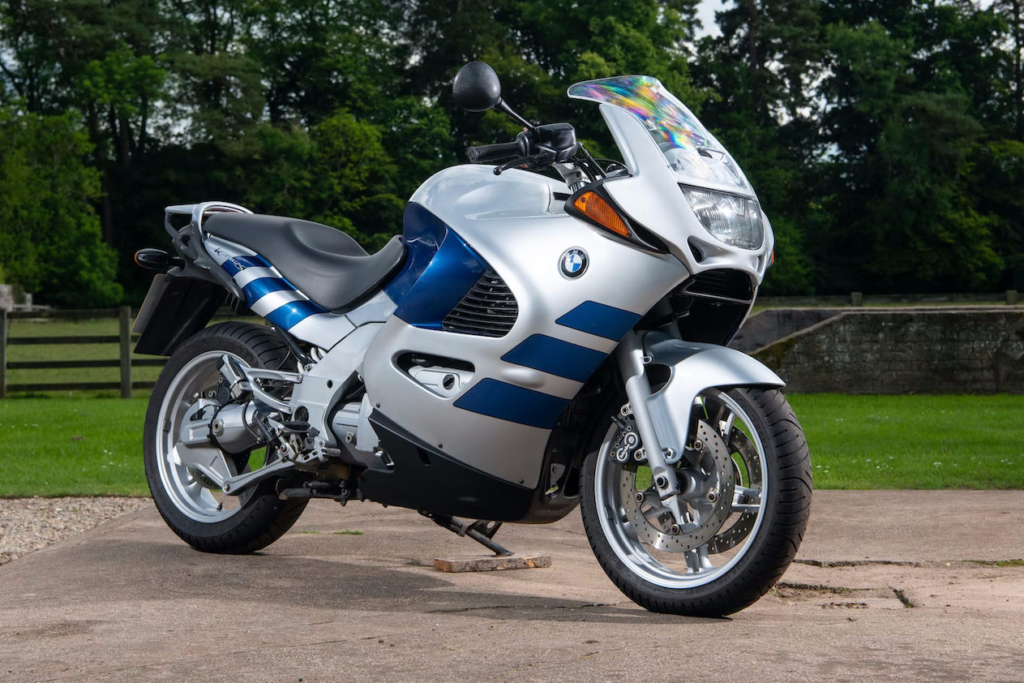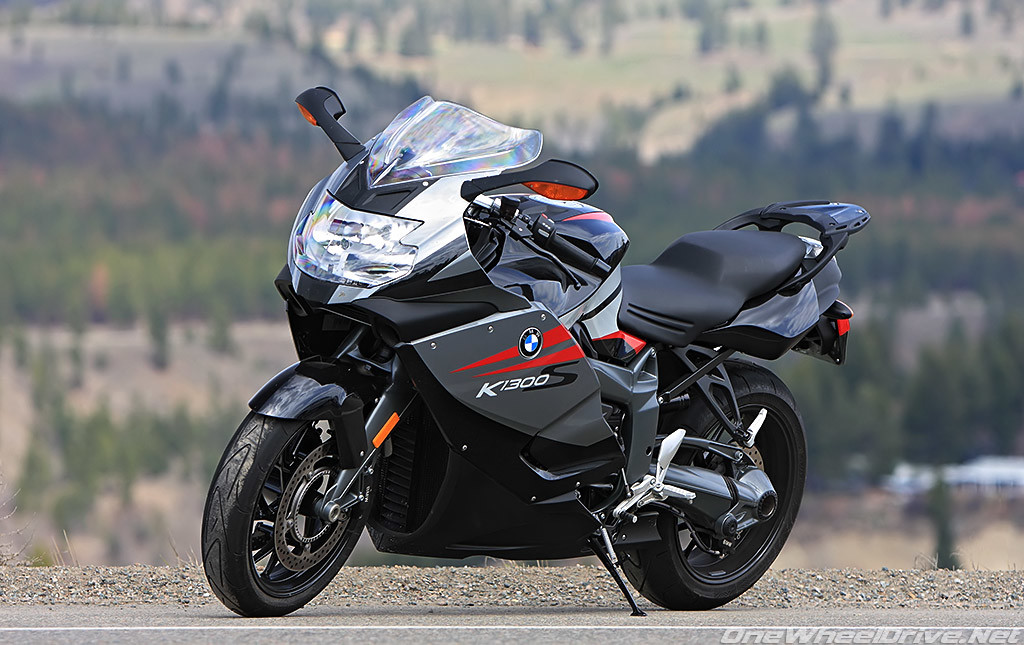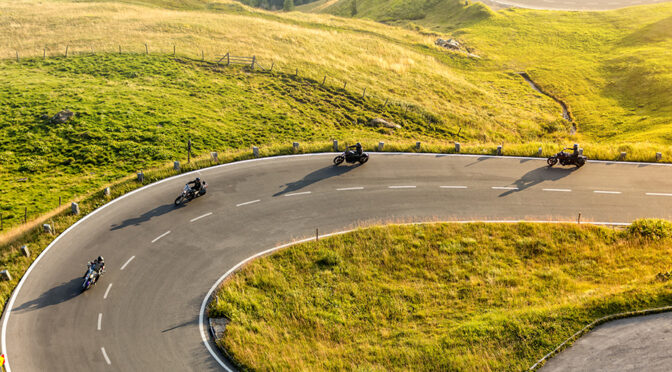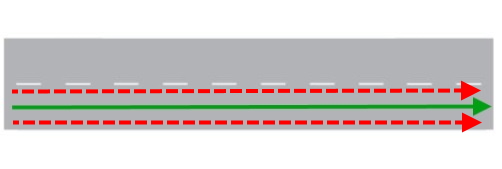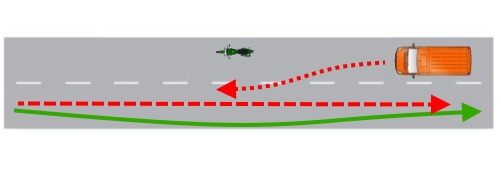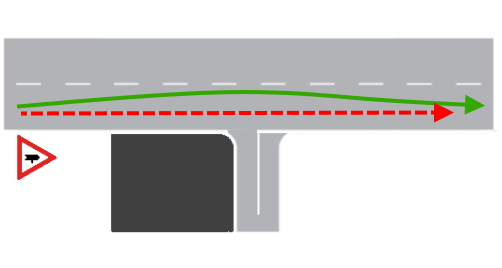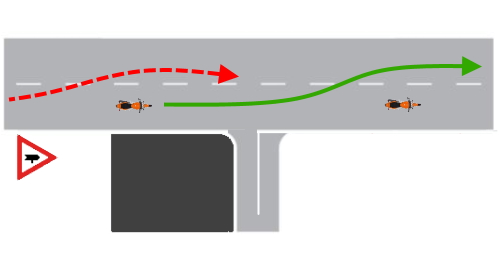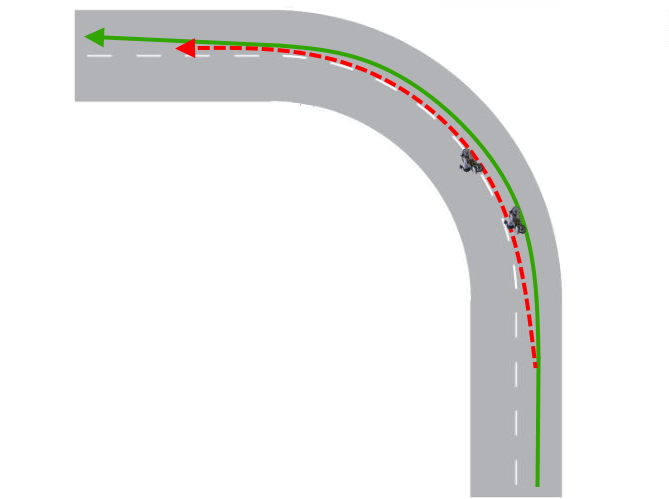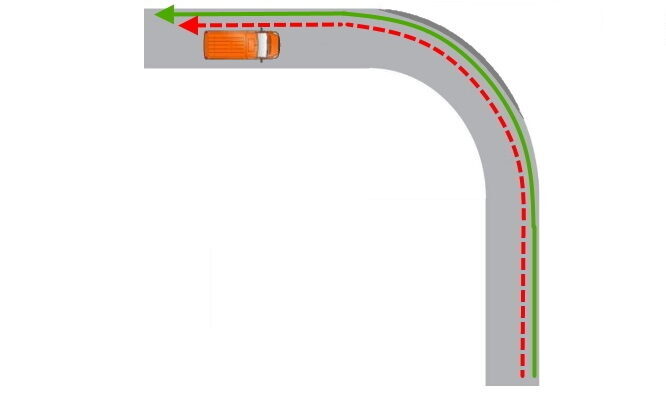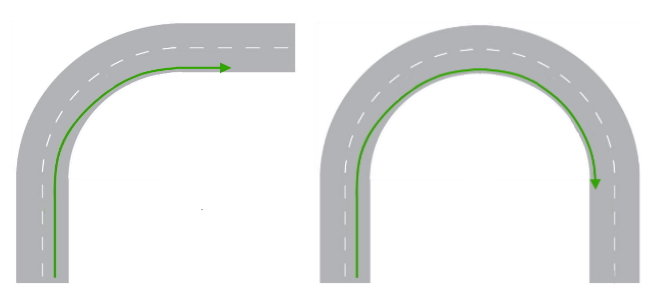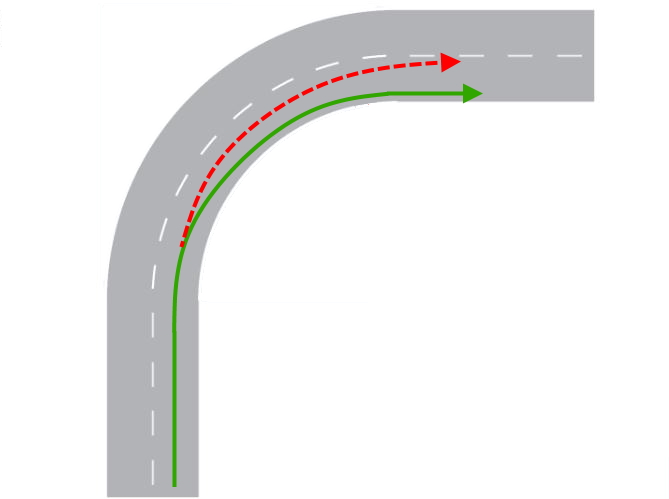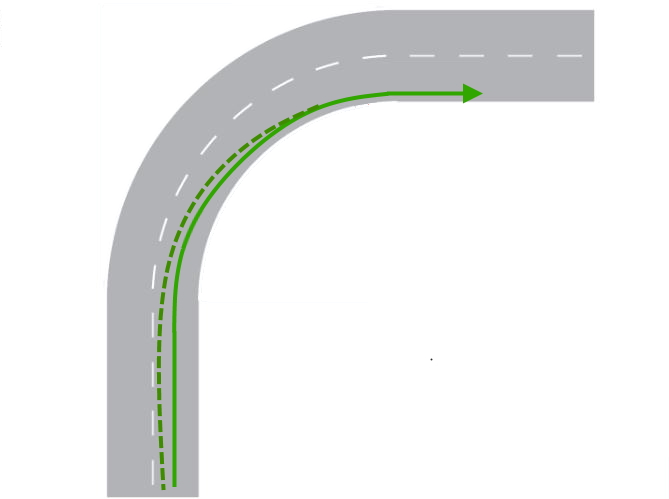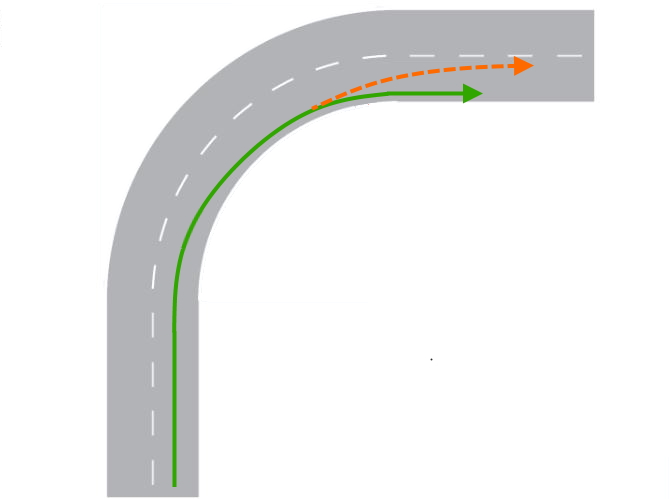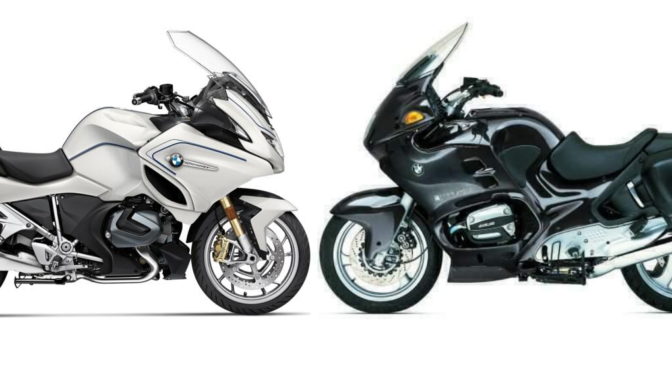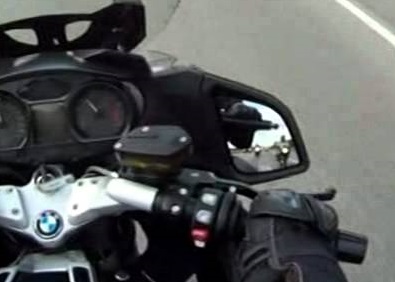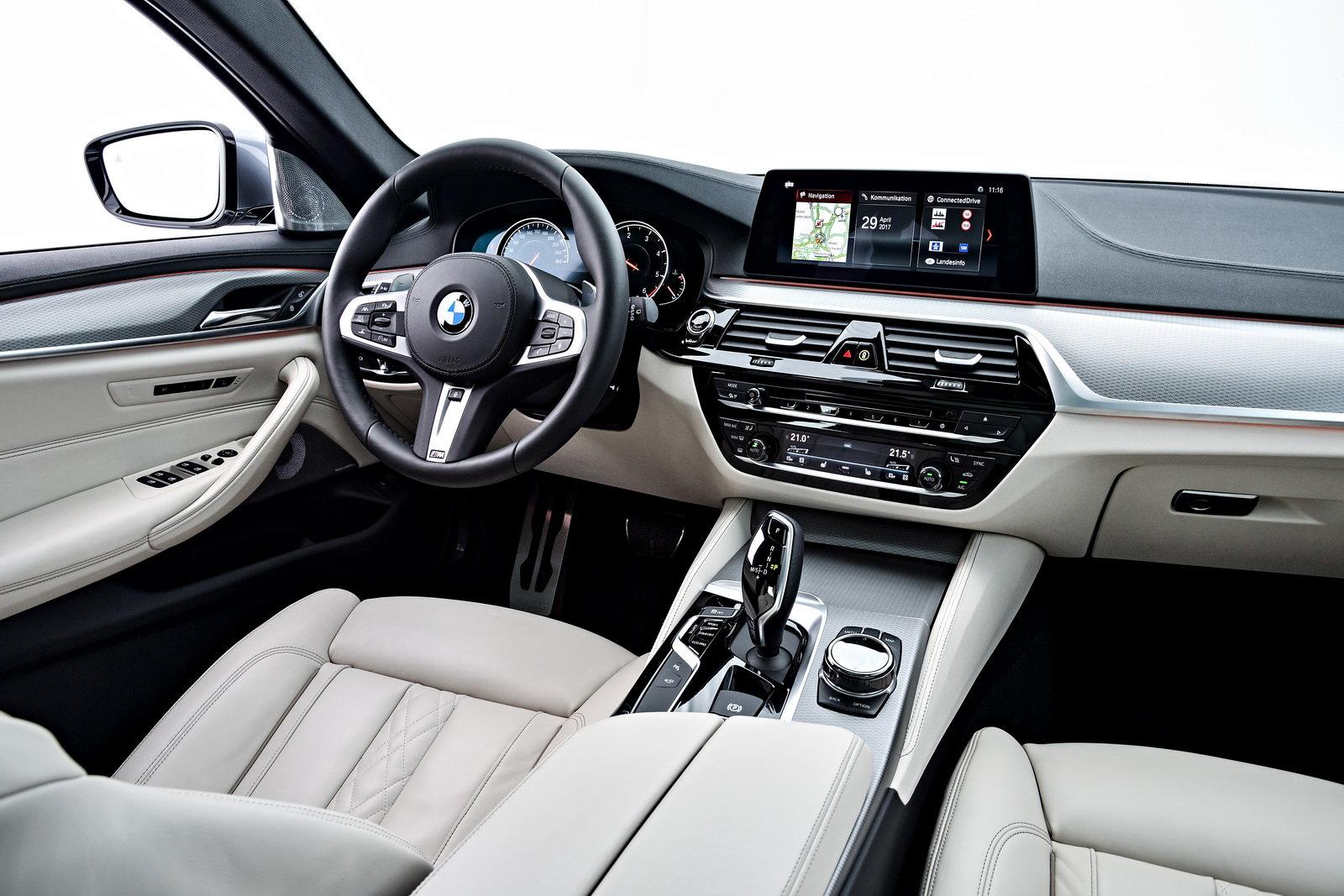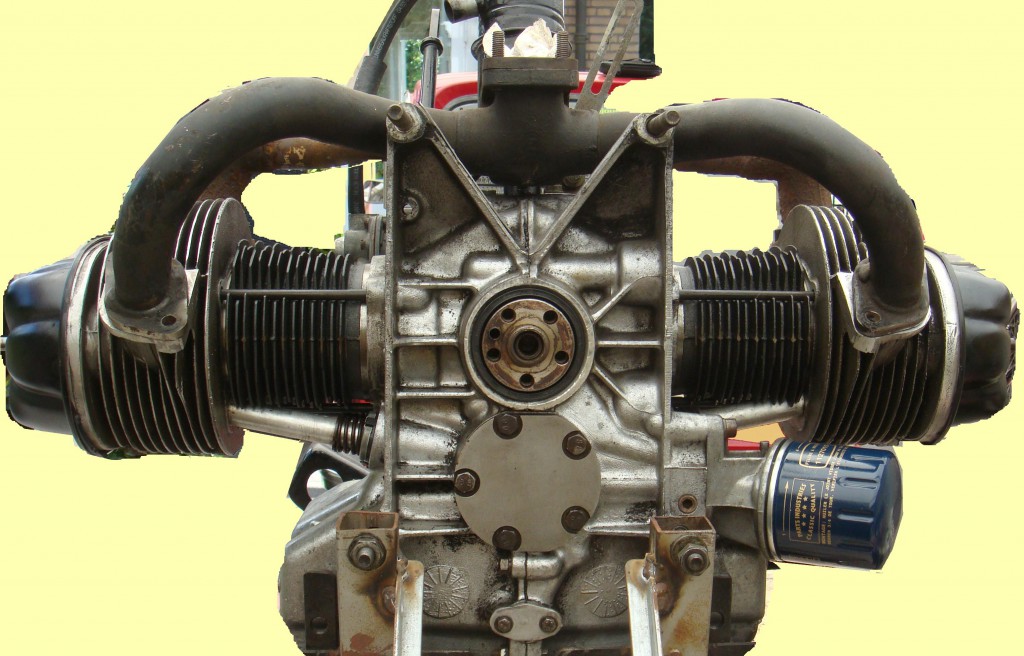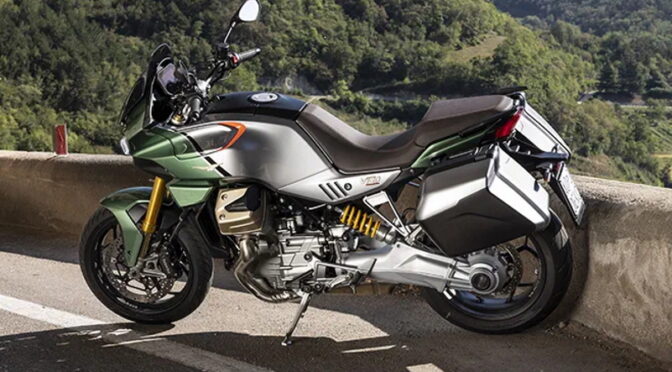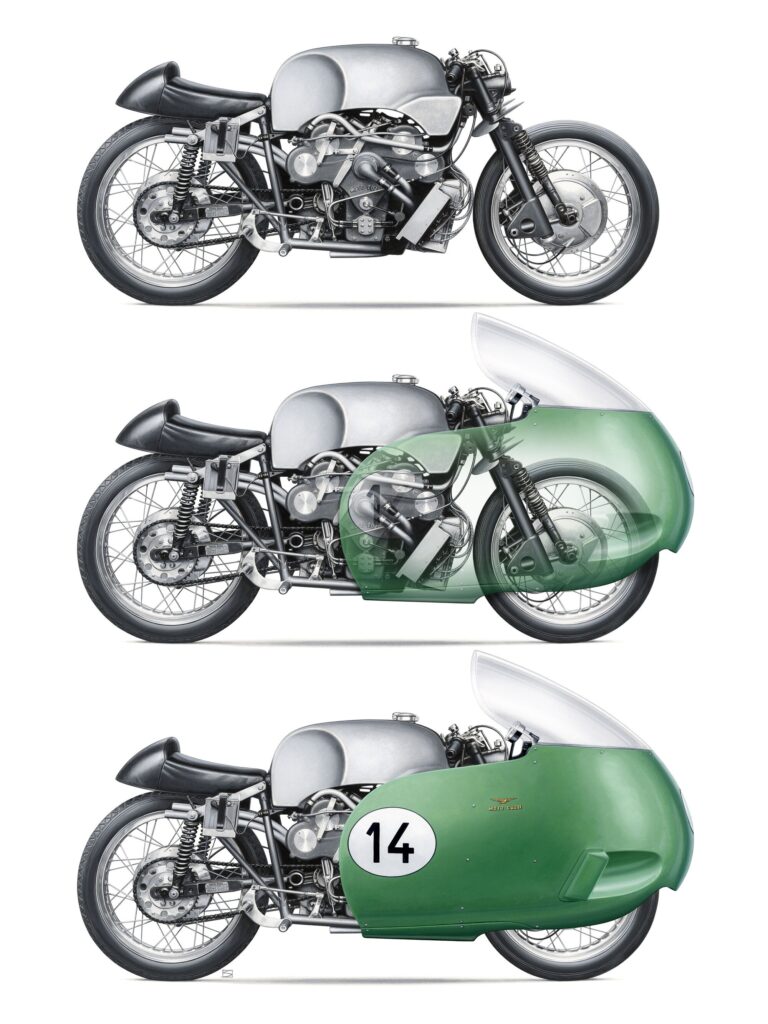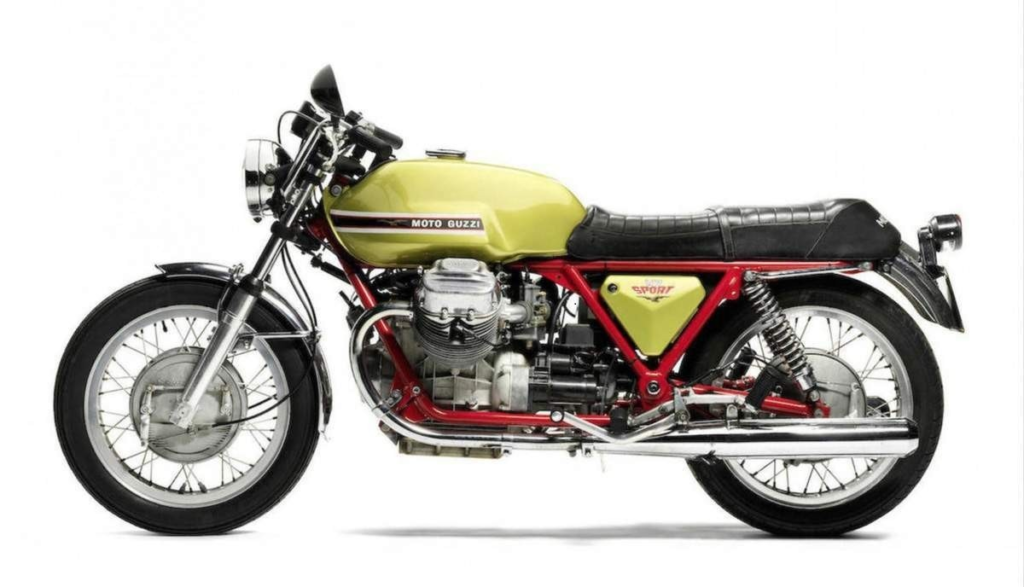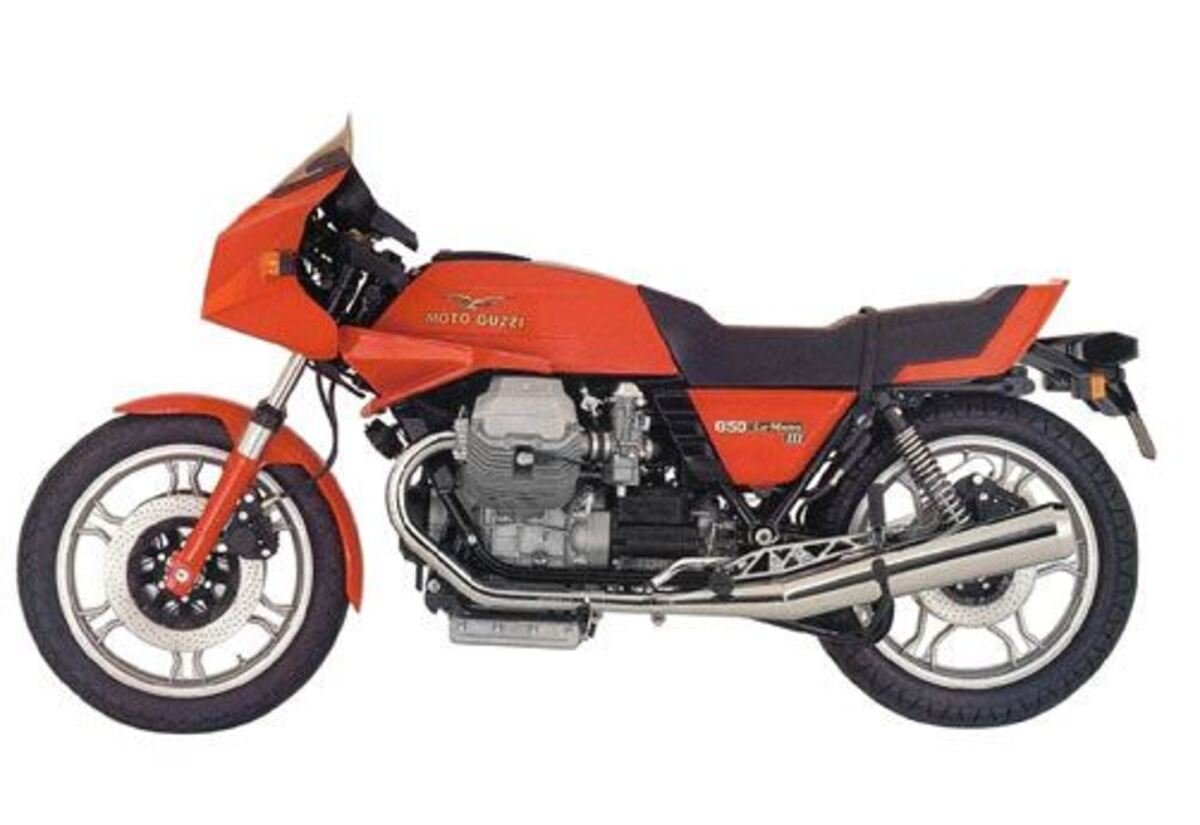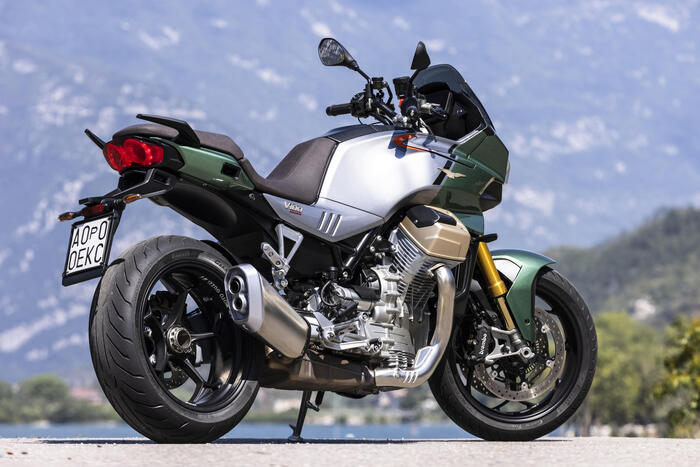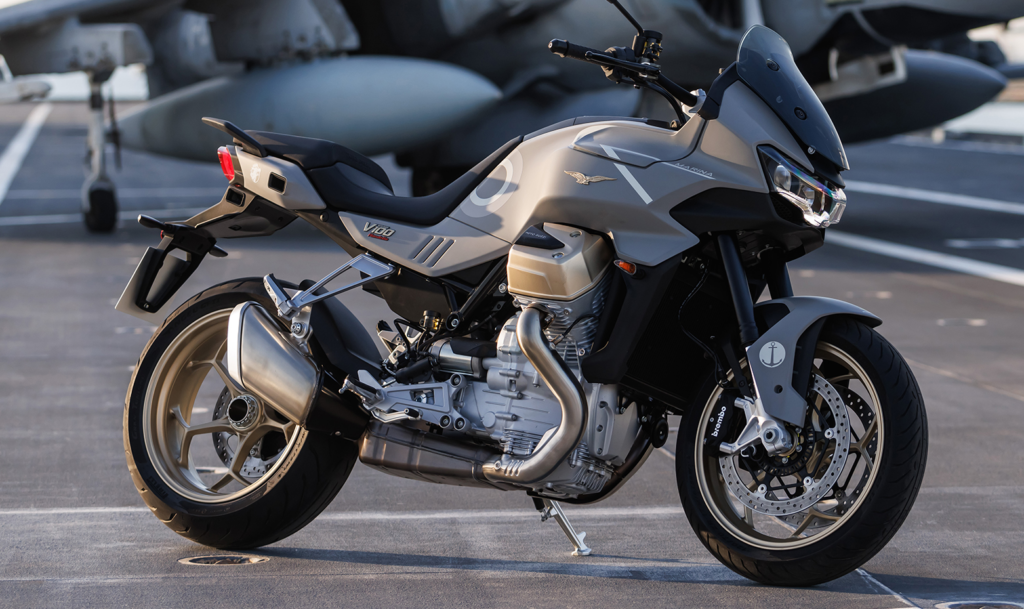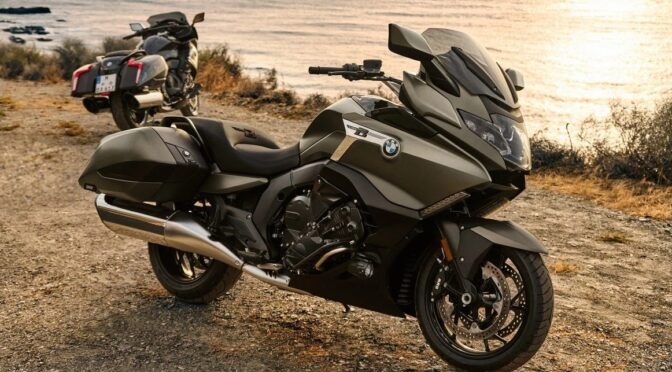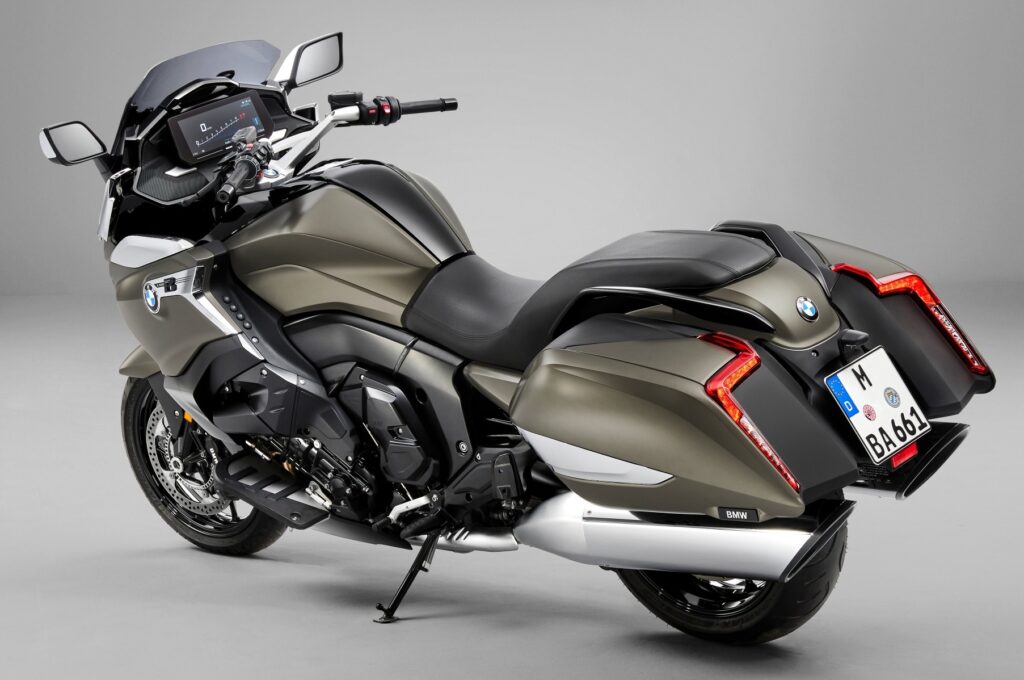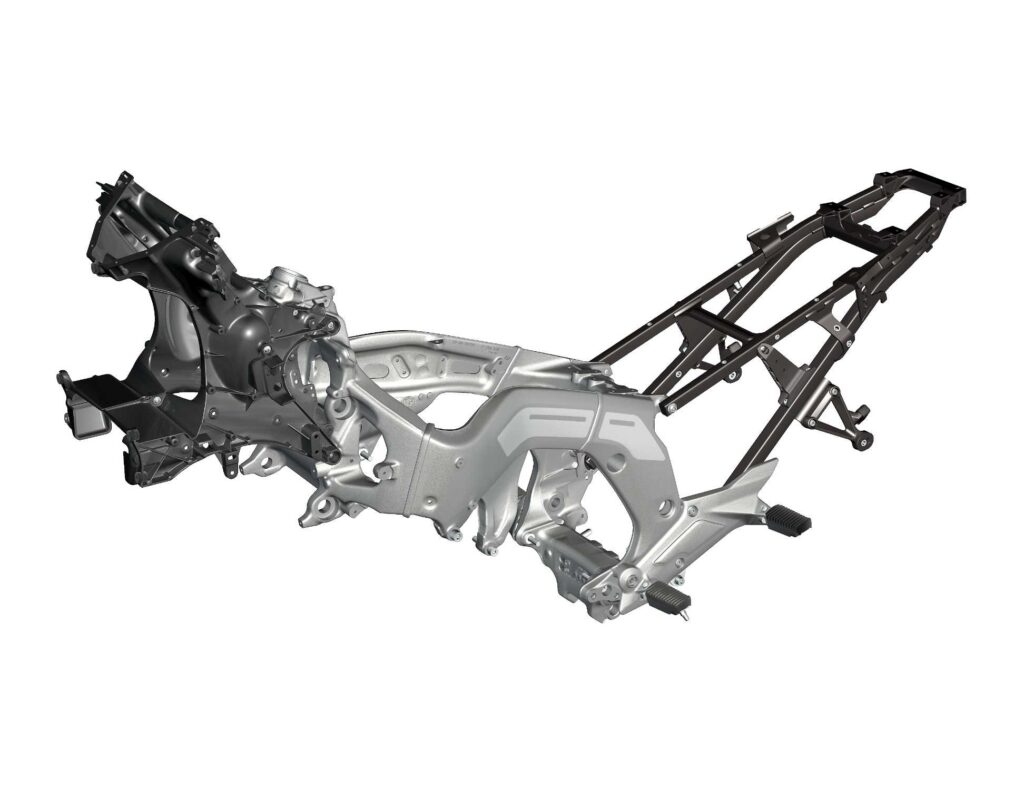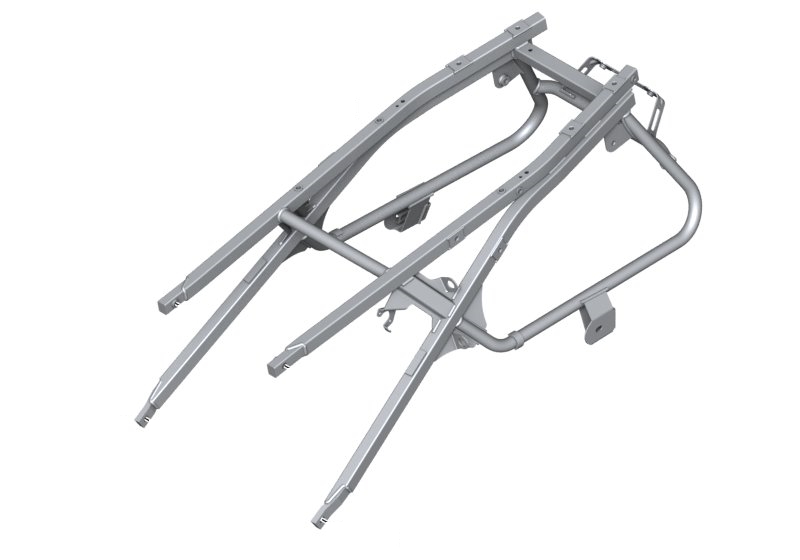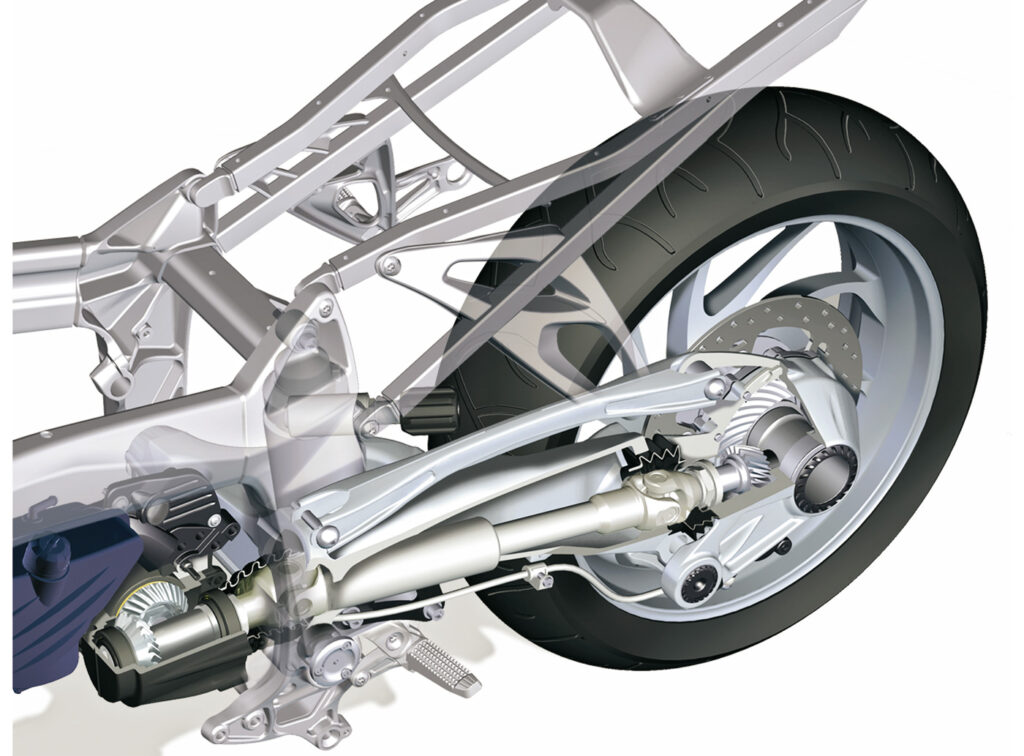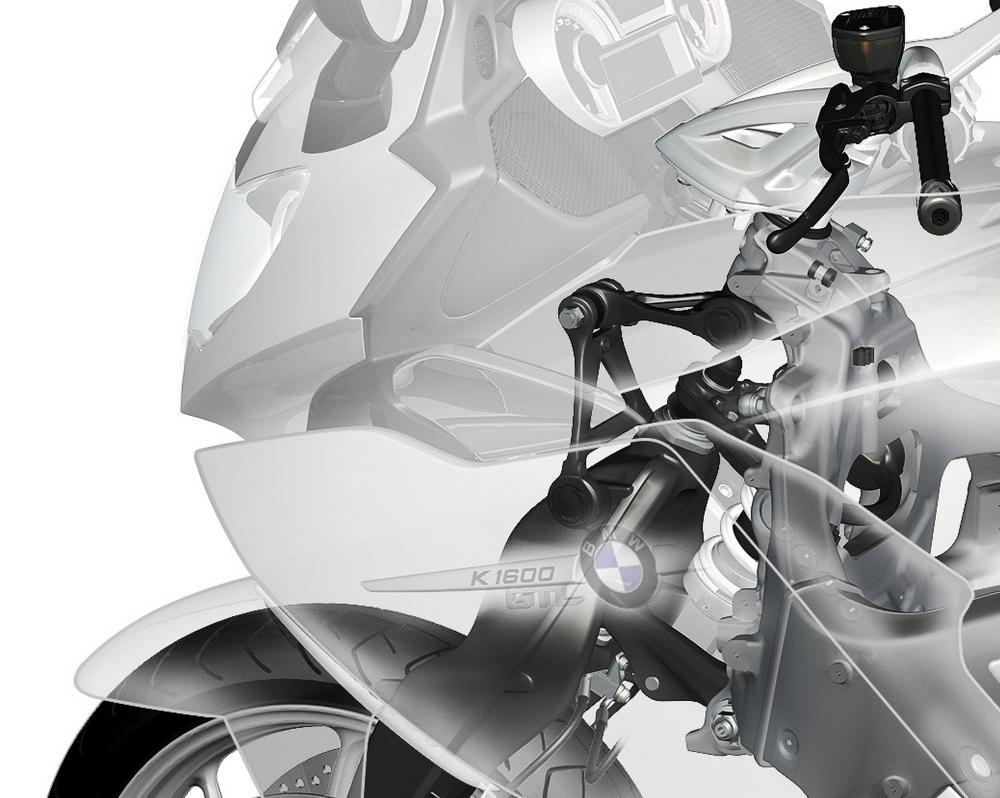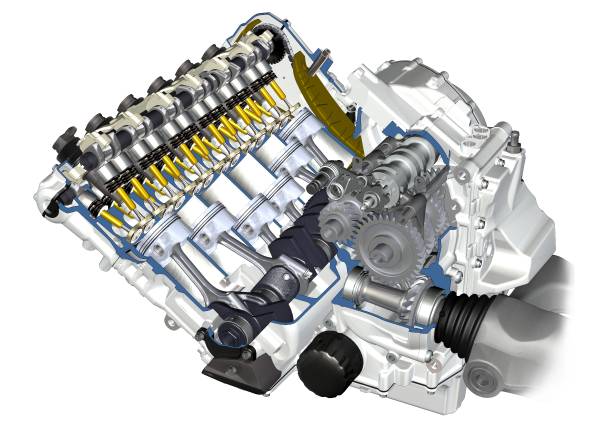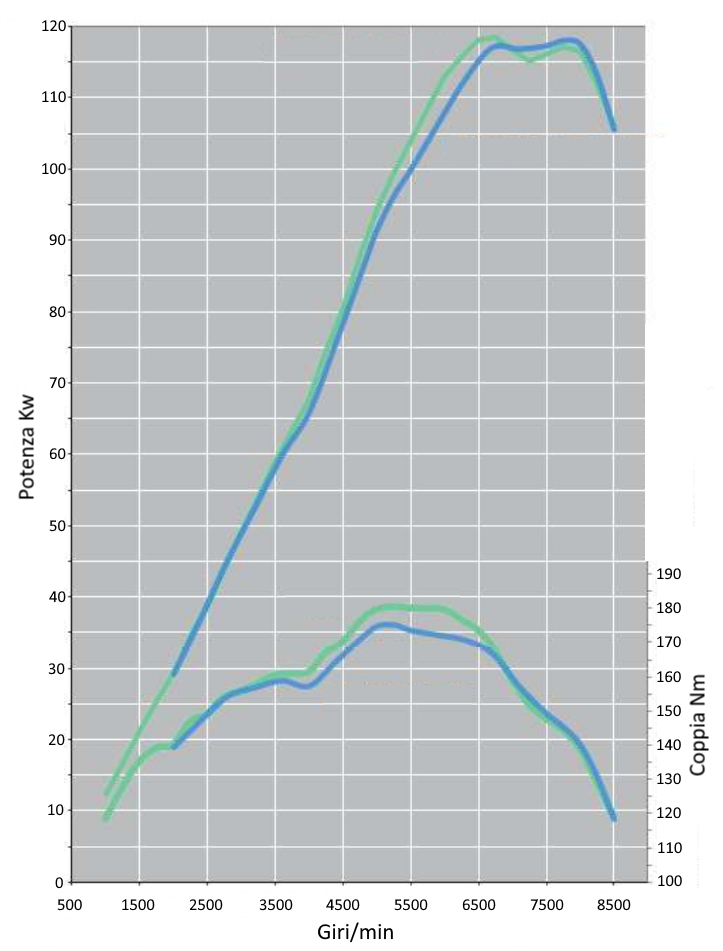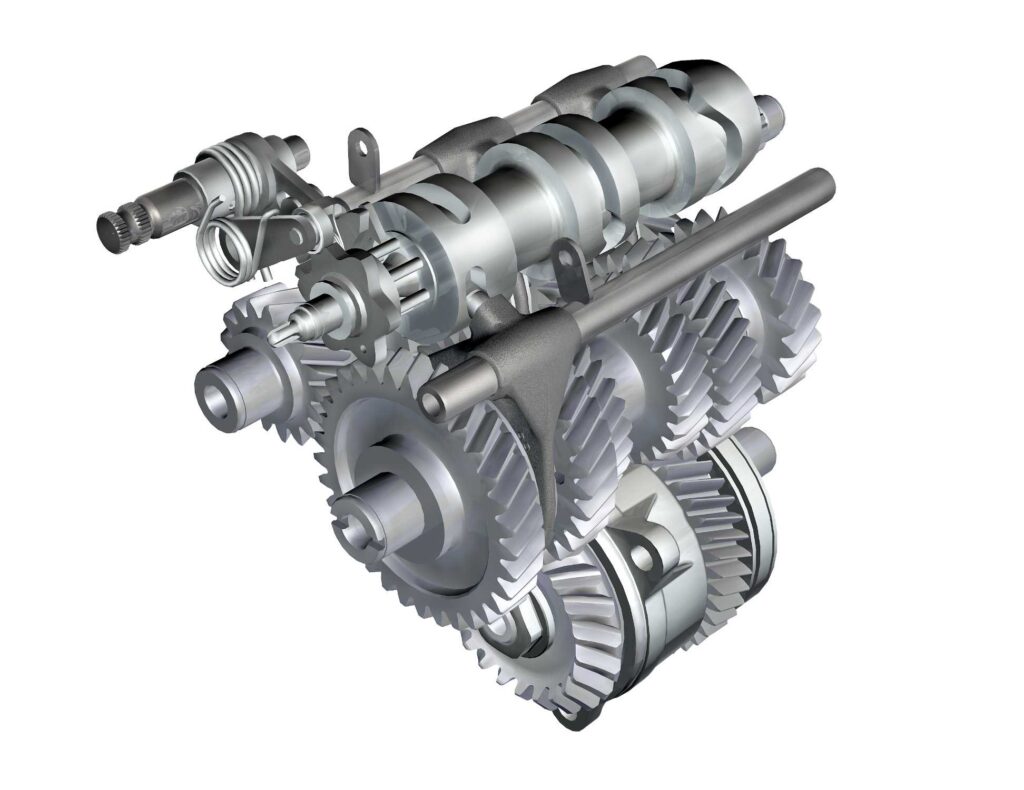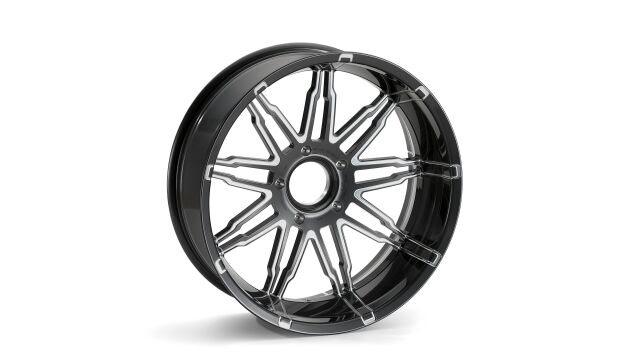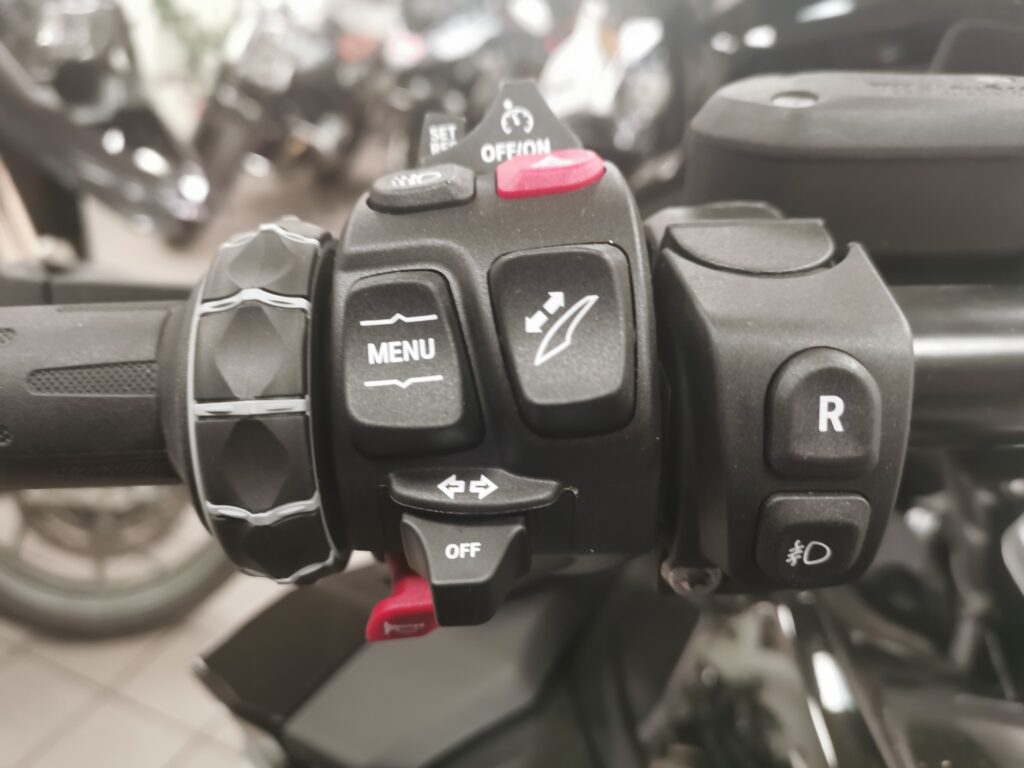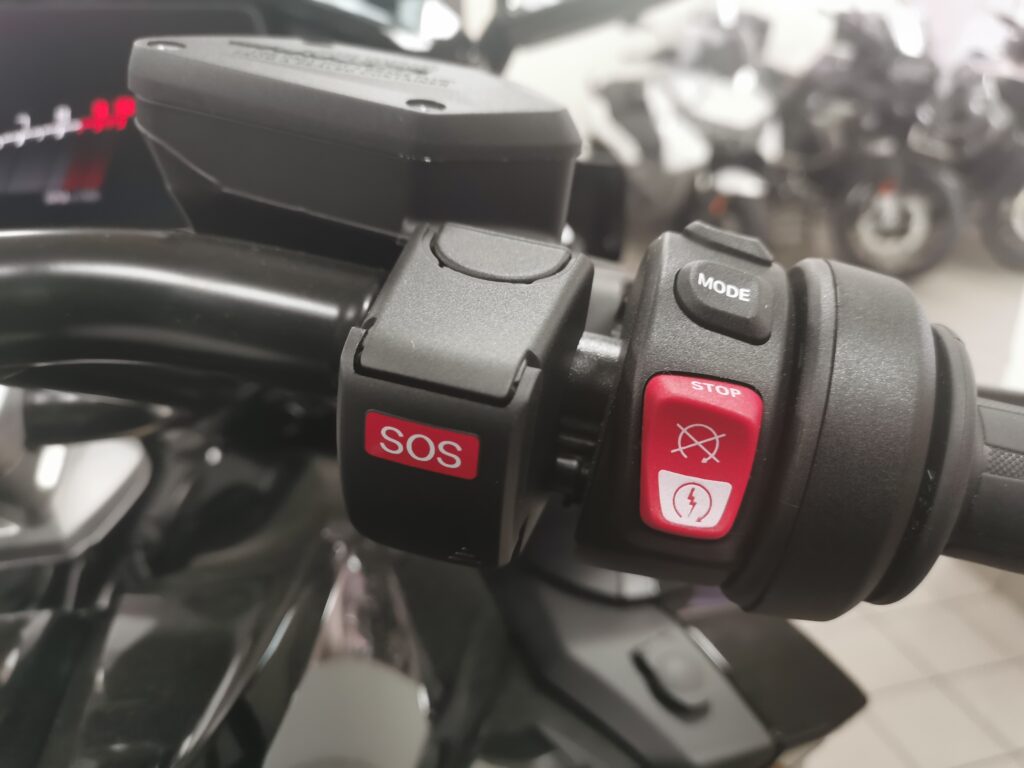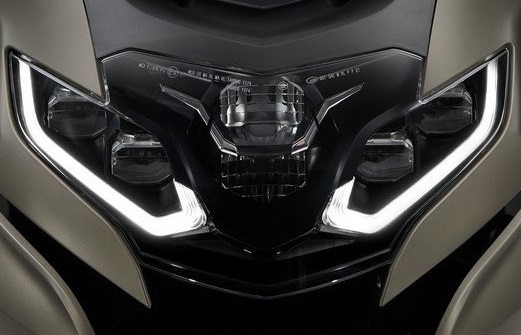Dai un’occhiata ai nostri Corsi di Guida Sicura, ai nostri Tour in Moto e ai nostri Tour in Miata!
Sempre una GS, ma più sportiva
I costruttori tedeschi sanno fare egregiamente parecchie cose. Una di queste consiste nell’evolvere un modello per decenni, conservando intatte le caratteristiche archetipiche del modello capostipite. Una Golf del 2024 è indubbiamente parente della prima Golf del 1971, pur essendo molto diversa da essa sotto molti aspetti. Per contro, FIAT nello stesso periodo ha lanciato la 127, poi la Uno, poi la Punto e oggi in Europa non ha un modello che ne abbia preso il posto (ce l’ha in Sudamerica e si chiama Argo. Non lo sapevate, eh?). E lo stesso vale per qualsiasi altro modello di questa casa, come di tante altre.
La serie R-GS è l’esatto equivalente motociclistico della Golf. La sua storia iniziò nel 1980 con la R80 G/S (Gelände/Strasse, cioè terreno/strada) e la R1300GS del 2023 non è che l’ultima incarnazione di tale concetto.
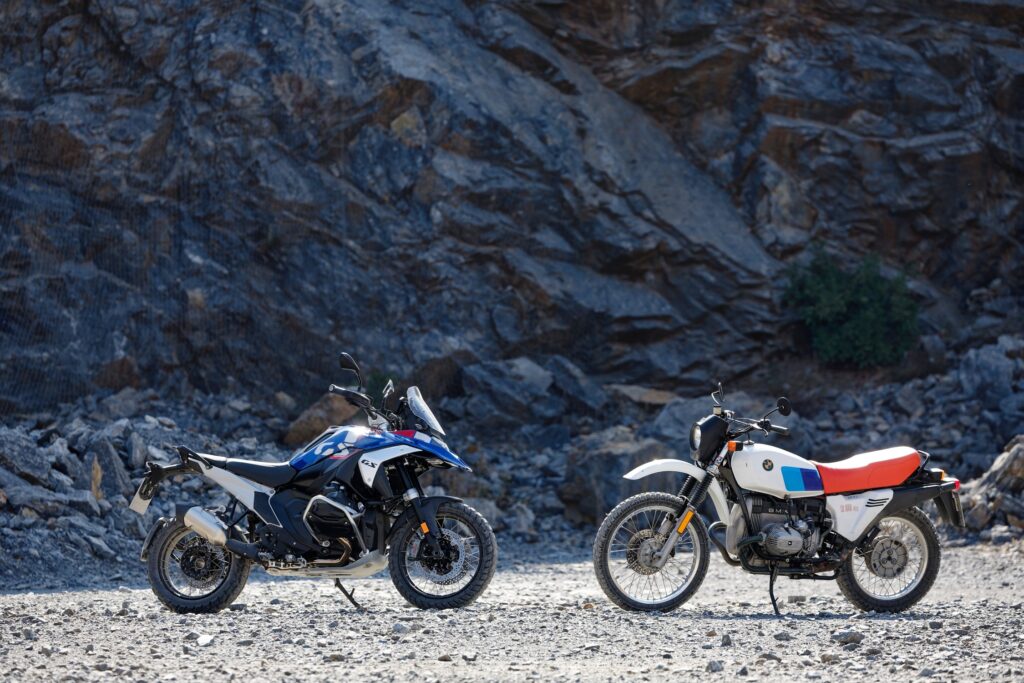
Tuttavia, nel corso di questa evoluzione, non tutti i nuovi modelli hanno avuto la stessa importanza; alcuni sono stati semplici restyling o evoluzioni tutto sommato marginali. I modelli che hanno davvero comportato innovazioni sostanziali sono stati i seguenti.
- Le R80GS e R100GS del 1987. Molto simili alla capostipite, furono le prime a essere dotate di sospensione posteriore Paralever, che eliminava il tipico “canguramento” delle moto con trasmissione ad albero, cioè la tendenza della sospensione a distendersi in accelerazione e a comprimersi in frenata.

- La R1100GS del 1994, la più rivoluzionaria di tutte. Fu la prima a essere equipaggiata con l’innovativo boxer a 4 valvole raffreddato a aria/olio e sospensione anteriore Telelever, ma soprattutto era molto più grande e potente dei modelli precedenti: il primo SUV della storia del motociclismo.
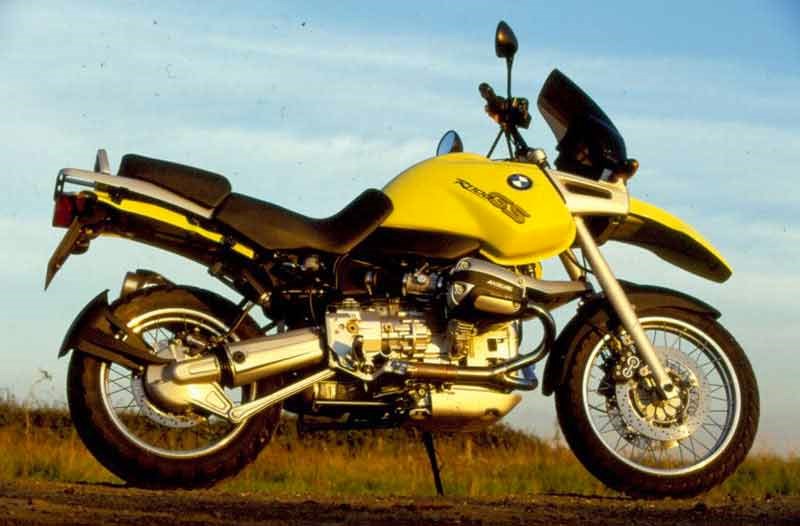
- La R1200GS del 2004. Sempre grande, ma decisamente più leggera, potente ed efficace rispetto alla precedente R1150GS, fu anche la prima ad essere equipaggiata con il sistema CAN-BUS, con notevole semplificazione della circuiteria elettrica.
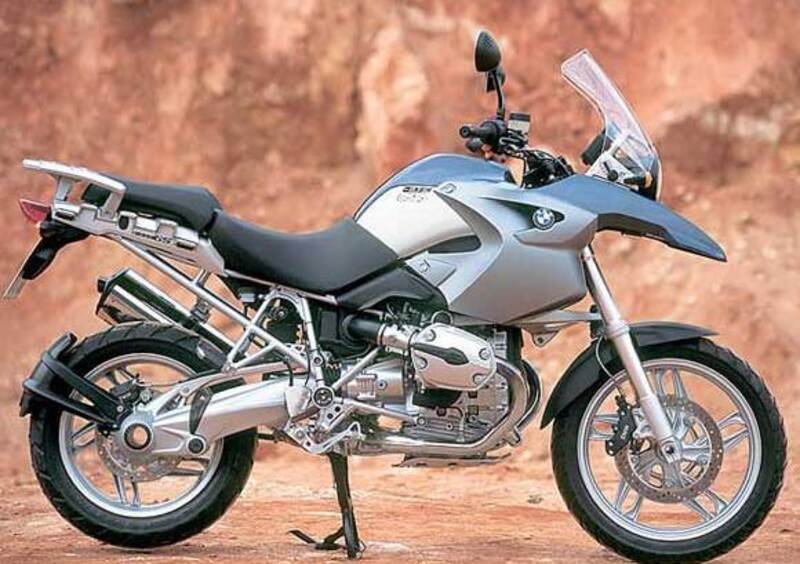
- La R1200GS del 2013. Pur mantenendo lo stesso nome, era una moto completamente diversa dalla precedente R1200GS bialbero e fu la prima ad essere equipaggiata con motore raffreddato a liquido con cilindri ad immissione verticale, nettamente più potente, e frizione multidisco in bagno d’olio.
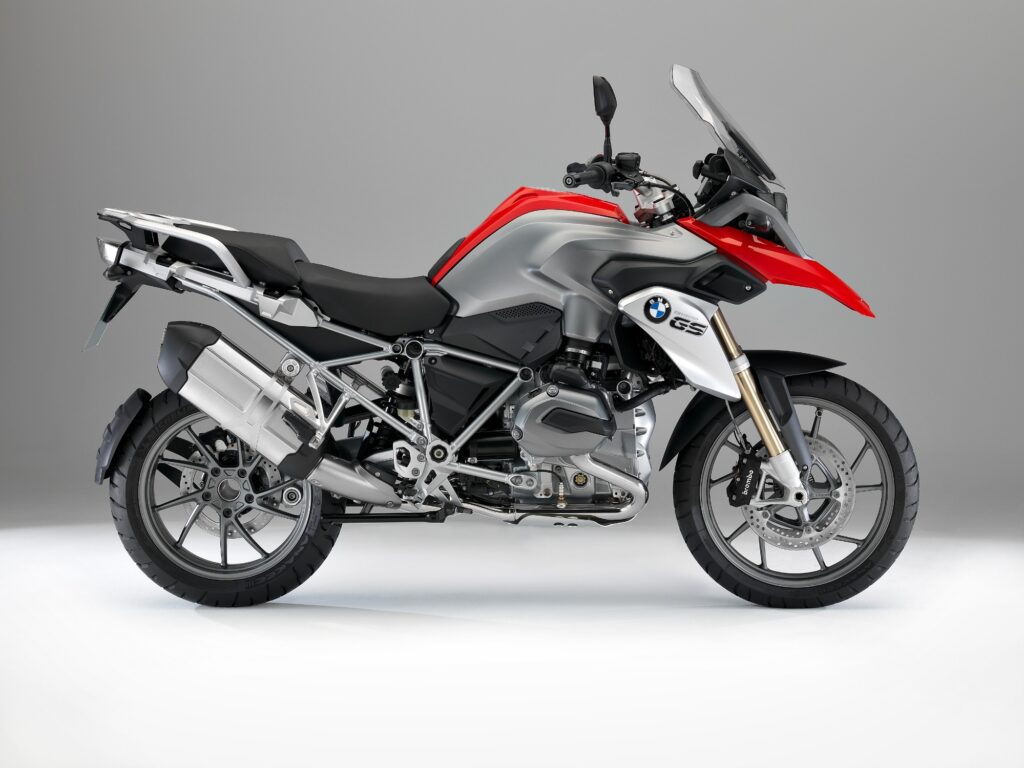
La nuova R1300GS merita in pieno di far parte di questo elenco, perché è senza dubbio fortemente innovativa rispetto alla precedente R1250GS. Le principali novità tecniche stanno nel gruppo motore-trasmissione completamente riprogettato e nell’introduzione degli ADAS basati su radar, ma quello che più colpisce di questa moto è la svolta impressa alla filosofia generale del modello, più slanciato, compatto e sportiveggiante rispetto a tutte le serie precedenti.
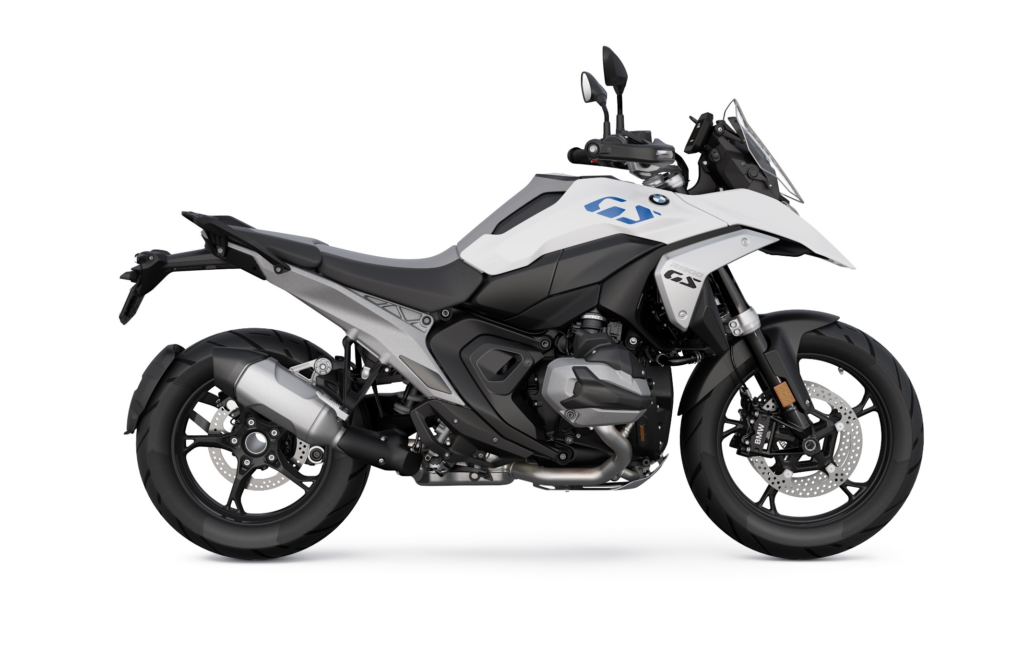
Per essere chiari, la R1300GS non è una moto piccola, rimane sempre una degna erede della R1100GS. Però è innegabile che essa non segua in pieno la linea seguita dalla casa bavarese fino alla R1250GS.
Com’è
Aspetto
Della R1300GS colpiscono immediatamente la maggior snellezza visiva dell’insieme, cui contribuisce parecchio la parte posteriore più leggera e affusolata con telaio reggisella più corto e portatarga a sbalzo e privo di gruppo ottico centrale – tutte le luci si trovano concentrate insieme agli indicatori di direzione – il serbatoio più rastremato (e dalla capienza scesa da 20 a 19 litri), il nuovo faro anteriore a forma di X, che rompe una tradizione di sguardi asimmetrici iniziata nel 1999 con la R1150GS, e la continuità tra sella e serbatoio, rafforzata da una copertura imbottita che arriva fino al tappo del serbatoio. Altri elementi di rottura con il passato sono il parabrezza, più piccolo, che nella versione base non regolabile elettricamente è ancora più piccolo, e il nuovo telaio, che si distacca radicalmente per concezione ed estetica dai modelli precedenti. Il risultato è a mio avviso più elegante, meno teutonico e più dinamico rispetto alla serie 1250.
Per inciso, la F900GS, lanciata di recente mostra un’evoluzione filosofica simile, nel senso che il nuovo modello è decisamente più leggero nelle linee e orientato al fuoristrada rispetto alla precedente F850GS. Al contrario, la F900GS Adventure ha mantenuto il classico aspetto pachidermico del genere. Sembrerebbe chiara la volontà di BMW di differenziare maggiormente le versioni standard dalle Adventure. Tutto lascia credere che la nuova R1300GS Adventure confermerà tale tendenza.
Versioni e dotazioni
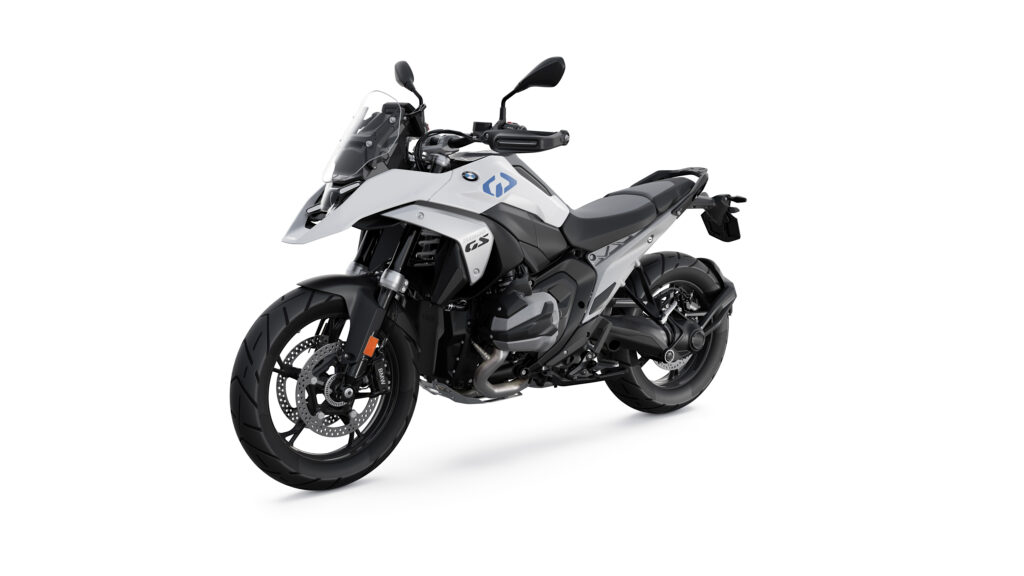
La R1300GS in versione base (20.850 Euro) è bianca con scritte blu e cerchi in lega e comprende di serie una dotazione piuttosto completa di accessori:
- display TFT con BMW Motorrad Connectivity
- faro a matrice di LED
- anabbagliante diurno
- controllo dinamico della trazione (DTC)
- ABS Pro completamente integrale
- 4 modalità di marcia (Eco, Rain, Road, Enduro)
- Hill Start Control (HSC)
- Dynamic Brake Control (DBC)
- cruise control (normale, non adattivo)
- regolazione della coppia motore frenante in scalata (MSR)
- controllo pressione pneumatici (RDC)
- Keyless Ride
- manopole riscaldabili
- vano di ricarica per smartphone con presa di carica USB
- paramani con indicatori di direzione integrati
- E-Call (Sistema di chiamata d’emergenza intelligente)
- Teleservice
Esistono inoltre le seguenti tre versioni speciali, che in aggiunta includono di serie quanto segue:
- Trophy (21.700 Euro), dedicata al fuoristrada, blu bianca e rossa, comprendente:
- sella del pilota confort in tre differenti altezze
- cerchi a raggi
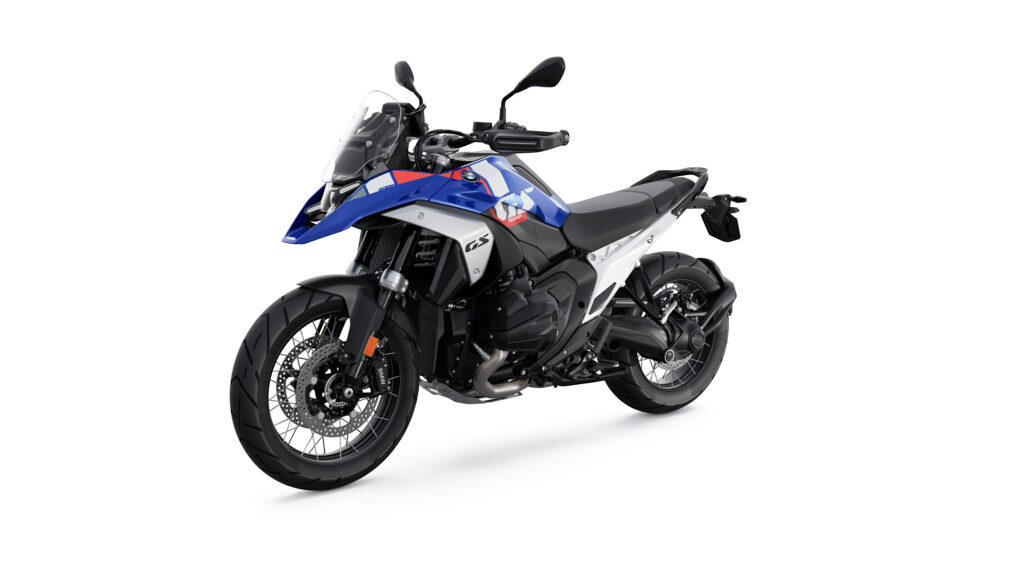
- Triple Black (21.700 Euro) nera, comprendente:
- cerchi in lega
- parabrezza maggiorato a regolazione elettrica con deflettori supplementari
- cavalletto centrale
- sella del pilota confort in tre differenti altezze
- kit passeggero (sella confort, pedane confort e portapacchi)
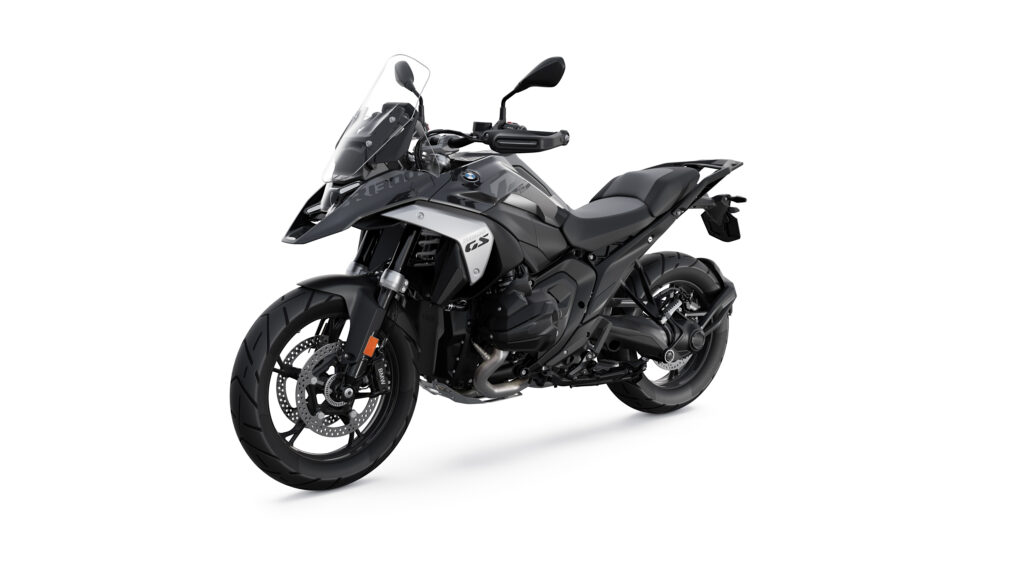
- Option 719 Tramuntana (23.650 Euro. Dio solo sa dove hanno pescato questa parola; da quello che so, il vento del nord si chiama così solo in Corso), verde metallizzato con scritte e decorazioni oro, comprendente:
- cerchi a raggi con canale color oro
- parabrezza maggiorato a regolazione elettrica con deflettori supplementari
- sella del pilota confort in tre differenti altezze
- kit passeggero (sella confort, pedane confort e portapacchi)
- cavalletto centrale
- pacchetto estetico Option 719 Shadow comprendente leve e coperchi vari in metallo fresato scuro.
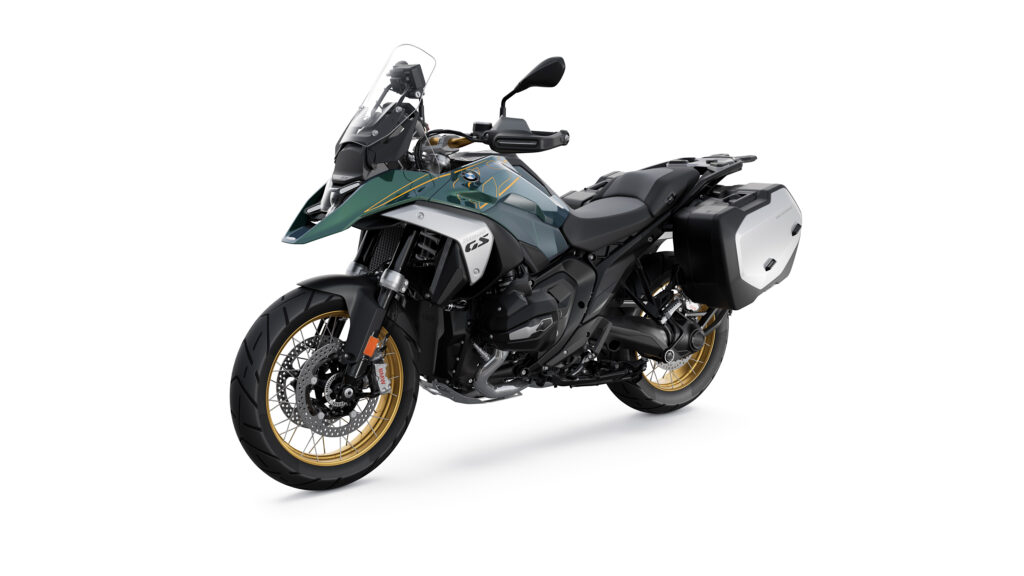
Come sempre in BMW, è possibile avere dalla fabbrica alcuni pacchetti standard e una serie di accessori acquistabili singolarmente.
I pacchetti sono i seguenti.
- Dynamic Pack comprendente:
- Cambio elettroassistito Pro
- DSA – Dynamic Suspension Adjustement (assetto elettronico con compensazione del carico e adattamento dell’escursione elastica)
- Modalità di marcia Pro
- Sport Brake (pinze freno speciali alleggerite con scritta rossa e maggior efficacia, solo con Dynamic Pack)
- Innovation Pack comprendente:
- Riding Assistant
- Headlight Pro (faro adattivo a matrice di led)
- Pacchetto Confort (di serie su Triple Black e Option 719 Tramuntana) comprendente:
- parabrezza maggiorato a regolazione elettrica con deflettori supplementari
- cavalletto centrale
- Pacchetto Touring comprendente:
- chiusura centralizzata di valigie e topcase abbinata al Keyless Ride
- estensione paramani
- supporti valigie laterali
- predisposizione navigatore GPS
- cromatura collettori di scarico.
Non ho capito bene perché alcuni siano “pacchetti” e altri “pack”. Misteri del marketing.
Gli accessori acquistabili singolarmente, pur se presenti in alcune versioni e pacchetti, sono i seguenti.
- Antifurto
- Cavalletto centrale
- Cerchi a raggi incrociati con canale in alluminio nero
- Cerchi a raggi incrociati con canale in alluminio oro
- cerchi da enduro forgiati
- Controllo adattivo dell’altezza (solo con Dynamic Pack)
- Enduro Package Pro:
- manubrio rialzato
- barre paramotore
- leva freno anteriore corta
- poggiapiedi conducente GS Vario regolabili su due altezze
- leve cambio e freno regolabili
- indicatori di direzione tradizionali ad astina anziché nei paramani
- Faretti supplementari a LED
- Headlight Pro
- Kit passeggero (sella confort, pedane confort e portapacchi)
- Manubrio rialzato
- Parabrezza elettrico
- Pneumatici tassellati
- Predisposizione navigatore GPS
- Riding assistant
- Sella del pilota confort in tre differenti altezze
- Sella riscaldata per pilota e passeggero
- Sospensioni Sport a corsa allungata (solo con Dynamic Pack)
- Supporti per valigie laterali
- Supporto per topcase
Inoltre, BMW fornisce in aftermarket, come di consueto, una vasta gamma di accessori che includono le valigie, borse serbatoio, protezioni di vario tipo ecc.
Ciclistica
La ciclistica si basa sempre sull’accoppiata Telelever anteriore e Paralever posteriore, ma il tutto è stato profondamente rivisitato.
In precedenza, il telaio era essenzialmente composto da tubi di alluminio dritti a sezione circolare, il cui traliccio caratterizzava fortemente l’estetica della moto. Sulla R1300GS invece c’è un telaio in lamiera d’acciaio, formato in parte da una struttura a guscio e in parte da elementi a sezione quadrangolare, che sostiene il motore, l’avantreno e un telaio posteriore reggisella in alluminio pressofuso, più corto del precedente, ma robusto a sufficienza per consentire l’installazione di un grande portapacchi e del tris di valigie.
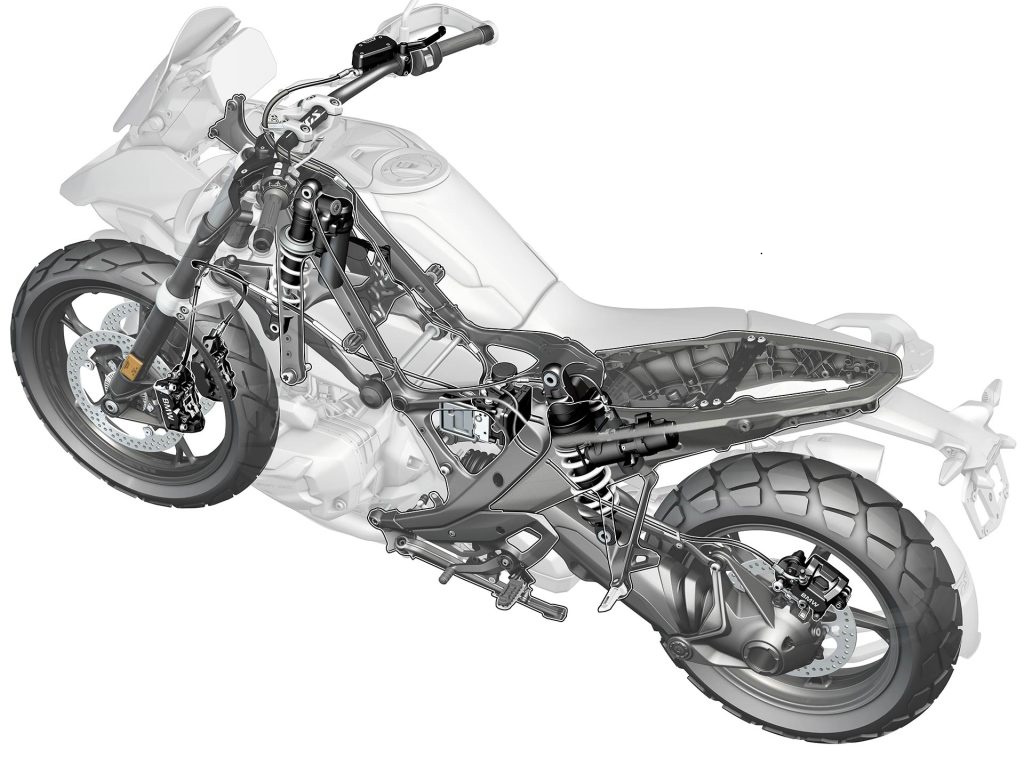
Secondo la Casa bavarese, il nuovo sistema è più rigido e consente di alloggiare più facilmente tutti gli accessori e i sensori disponibili sulla moto.
La sospensione posteriore è un classico parallelogramma Paralever a un braccio oscillante sul lato sinistro della moto, cui è sovrapposta una leggera barra cava di reazione. I due elementi collegano il telaio al gruppo mozzo/coppia conica. Nel braccio oscillante ruota l’albero di trasmissione a due giunti cardanici e il tutto è controllato da un gruppo molla-ammortizzatore ad assorbimento progressivo WAD posto quasi verticalmente sotto la sella, che collega il braccio al telaio senza alcun cinematismo. Il parallelogramma è dimensionato in modo da comportarsi come una trasmissione normale, incluso il tiro catena ed è stato rivisitato nella posizione degli snodi e nella rigidità.
La sospensione anteriore si basa sulla ormai classica geometria Telelever. La forcella, i cui steli sono privi di molle e ammortizzatori, è infulcrata superiormente al telaio e inferiormente a un triangolo oscillante a sua volta incernierato al telaio, e il tutto è controllato da un gruppo molla-ammortizzatore a vista che collega il triangolo al telaio. Con questo schema, quando la sospensione si comprime, l’inclinazione della forcella rispetto alla verticale aumenta, in modo tale che l’asse della ruota si muova pressoché verticalmente, anziché seguire l’inclinazione di una forcella tradizionale.
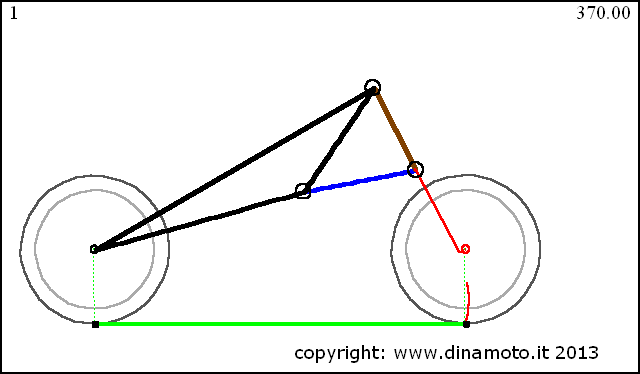
I vantaggi di tale geometria rispetto a una forcella tradizionale sono i seguenti:
- marcato effetto antiaffondamento in frenata, senza alcuna necessità di frenare l’idraulica o irrigidire la molla
- maggior confort in frenata, soprattutto per il passeggero, dovuto all’assetto più stabile e al miglior assorbimento delle sconnessioni
- maggior stabilità in frenata, dovuta al fatto che l’interasse non si accorcia al comprimersi della forcella
- trasferimento di carico sullo pneumatico anteriore più rapido in frenata, con minor propensione al bloccaggio della ruota
- possibilità di entrare in curva fortemente pinzati
Per contro, una forcella tradizionale di qualità assicura una maggior maneggevolezza in ingresso curva, dovuta:
- all’accorciamento dell’interasse
- all’effetto molla che, quando si rilascia il freno anteriore, “spara” l’avantreno dentro la curva.
Sulla R1300GS è presente un nuovo tipo di Telelever, ribattezzato “Telelever EVO”. In effetti, esso incorpora una novità assoluta molto interessante, che rende pienamente merito al suffisso.
Non molti sanno che sui precedenti modelli BMW il Telelever era declinato in due tipi diversi, in base all’altezza del manubrio. Come abbiamo visto sopra, una caratteristica tipica di questa geometria è il fatto che, al comprimersi della forcella, questa aumenta la propria inclinazione rispetto alla verticale e ciò si ripercuote ovviamente anche sul manubrio. Ciò non è un problema sui modelli dotati di semimanubri, dove le manopole rimangono praticamente ferme al variare dell’inclinazione, ma potrebbe diventarlo sulle moto a manubrio alto come le GS, perché, in assenza di accorgimenti di qualche tipo, le manopole si sposterebbero indietro e in basso in modo evidente a ogni sconnessione, rendendo la guida sgradevole. Ecco perché su modelli come la R1200S e la K1200RS la piastra superiore di sterzo (e quindi il manubrio) è fissata rigidamente agli steli ed è collegata al telaio mediante un giunto sferico, mentre sulle R1250 RT e R1250GS la piastra superiore di sterzo è infulcrata rigidamente al telaio, mentre il collegamento con gli steli avviene mediante due giunti elastici, in modo da favorire il confort, ma con una perdita sensibile in termini di precisione di sterzata.
Nel Telelever EVO della R1300GS la piastra superiore della forcella è fissata al telaio con un cuscinetto sferico, è solidale con gli steli e si inclina insieme ad essi, come sulla R1200S, mentre il manubrio è montato su una piccola piastra separata fissata a un asse infulcrato rigidamente al telaio, che attraversa il cuscinetto sferico della forcella. La funzione sterzante è assicurata da una geniale piastra d’acciaio flessibile a forma di U, denominata “flex element”, che è fissata agli estremi alla piastra superiore di sterzo e al centro alla piastra del manubrio, rendendoli rigidamente solidali in sterzata, pur lasciandogli la libertà di assumere inclinazioni diverse tra loro.
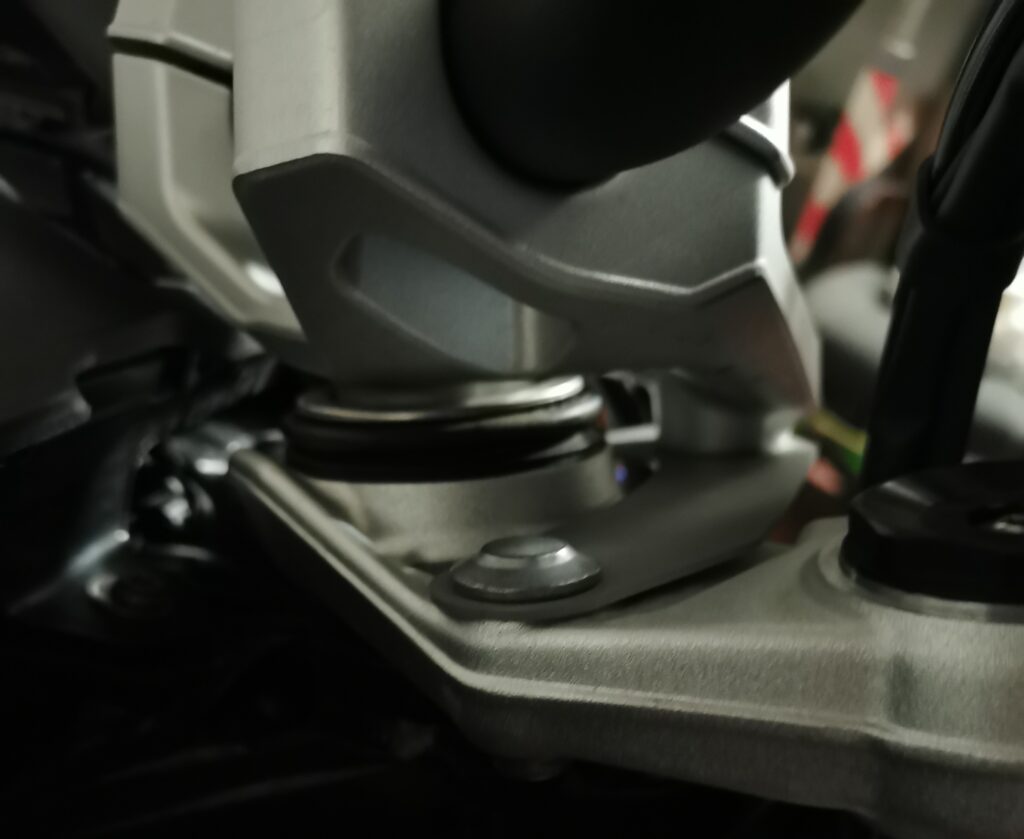
Questo video mostra chiaramente il funzionamento del nuovo sistema.
Secondo BMW, questa soluzione dovrebbe coniugare la precisione di guida delle versioni sportive al comfort sullo sconnesso delle versioni turistiche. Come vedremo nel seguito, direi che ci sono riusciti in pieno. L’unico inconveniente di questa geometria è che non c’è più spazio per il blocchetto di avviamento. Ecco perché la R1300GS ha di serie il sistema Keyless, con il tasto di accensione spostato sul manubrio destro.
Le principali quote ciclistiche sono le seguenti (tra parentesi i dati della R1250GS).
- escursione anteriore 190 mm (190 mm)
- escursione posteriore 200 mm (200 mm)
- interasse 1518 mm (1514 mm)
- avancorsa 112 mm (100,6 mm)
- angolo di inclinazione dello sterzo 26,2° (25,7°)
Interessanti l’aumento dell’avancorsa, che comporta una maggiore stabilità, anche considerando l’aumento della velocità massima, e l’aumento dell’inclinazione dell’asse di sterzo, che di per sé aumenta la leggerezza dello sterzo a scapito di una minor prontezza, probabilmente più che compensata dalla maggior precisione consentita dal Telelever EVO e dalla concentrazione delle masse.
I cerchi di serie sono in lega, ma sono disponibili anche cerchi a raggi incrociati e cerchi forgiati da fuoristrada, sempre con pneumatici tubeless e nelle misure 120/70 R 19 su cerchio da 3,00 x 19” all’anteriore e 170/60 R 17 su cerchio da 4,50 x 17” al posteriore. I cerchi forgiati consentono in totale di risparmiare 1,8 kg rispetto a quelli a raggi.
A richiesta è disponibile il sistema DSA (Dynamic Suspension Adjustment), cioè un nuovo sistema sospensioni semiattive, che variano automaticamente e istantaneamente la taratura in funzione della dinamica di guida e della situazione del fondo stradale. La novità sta nel fatto che la regolazione semiattiva non agisce soltanto sui freni idraulici, ma anche sul coefficiente elastico della molla posteriore, chiamando in causa una molla supplementare posta nel serbatoio dell’olio del mono posteriore.
Il DSA comprende la regolazione automatica del precarico in base al peso presente a bordo e prevede tre settaggi: Road, Dynamic e Enduro. I primi due possono essere selezionati indifferentemente con tutte le modalità di guida stradali, mentre in Enduro e Enduro Pro è disponibile il settaggio Enduro. Il cambiamento da un settaggio all’altro può avvenire anche in marcia. In più, a moto ferma, ciascuno dei settaggi può essere impostato su cinque diverse posizioni, per personalizzare al massimo il comportamento. A richiesta e solo in abbinamento con il DSA è disponibile anche il controllo adattivo dell’altezza. Il sistema consente di impostare l’altezza della moto come segue:
- In modalità di marcia ECO, Rain, Road Dynamic e Dynamic Pro, impostazione automatica dell’altezza oppure sempre alta
- In modalità di marcia Enduro e Enduro Pro, sempre alta o sempre bassa.
In ogni caso:
- all’arresto la moto si porta nella posizione bassa, per facilitare l’appoggio a terra
- all’apertura del cavalletto centrale, la moto si porta nella posizione alta, per favorire la manovra, e torna in posizione bassa una volta issata sul cavalletto.
Motore e trasmissione
Il motore della R1300GS somiglia per parecchi aspetti a quello delle 1250, ma in realtà è un’unità completamente nuova.

Si tratta sempre di un bicilindrico boxer, cioè con i cilindri opposti e bielle collegate a due diversi gomiti dell’albero motore distanti 180° l’uno dall’altro, cosicché i pistoni si muovono in opposizione tra loro, come i pugni di due pugili (boxers in inglese). Il motore è sempre disposto con i cilindri trasversali e l’albero motore longitudinale, cosa che ai nostri giorni si riscontra solo sulle BMW Boxer e relativi cloni est europei, sulle Moto Guzzi e sulle Triumph Rocket a tre cilindri.
Il raffreddamento è sempre misto ad aria e liquido, con due radiatori posti lateralmente. La distribuzione è sempre bialbero a camme in testa a quattro valvole per cilindro, e anche qui è presente il sistema di variazione di fase ShiftCam introdotto a partire dal motore 1250. In tale sistema, gli alberi a camme lato aspirazione (cioè quelli superiori) sono dotati di due camme per valvola, una per i carichi parziali e una per il pieno carico, con alzata e durata maggiori.
L’elettronica di bordo fa scorrere longitudinalmente ciascun albero di aspirazione mediante un tamburo desmodromico in funzione del regime, della richiesta di potenza e della modalità di marcia selezionata, in modo da selezionare la camma più adatte alle necessità.

Questo video illustra chiaramente il funzionamento del sistema.
Andiamo ora a vedere le novità, che sono parecchie.
La maggiore cilindrata (1.300 cc esatti contro 1.254) è ottenuta con un aumento dell’alesaggio da 102,5 a 106,5 mm, ma con corsa ridotta da 76 a 73 mm. Il rapporto di compressione è salito da 12,5:1 a 13,3:1, mentre le valvole sono cresciute da 40 a 44 mm all’aspirazione e da 34 a 35,6 mm allo scarico. L’insieme di queste modifiche ha consentito di raggiungere i 107 kW (145,5 CV) contro i 100 kW (136 CV) allo stesso regime di 7.750 giri e una coppia di ben 149 Nm a 6.500 giri contro i 143 Nm a 6.250 giri del vecchio motore.
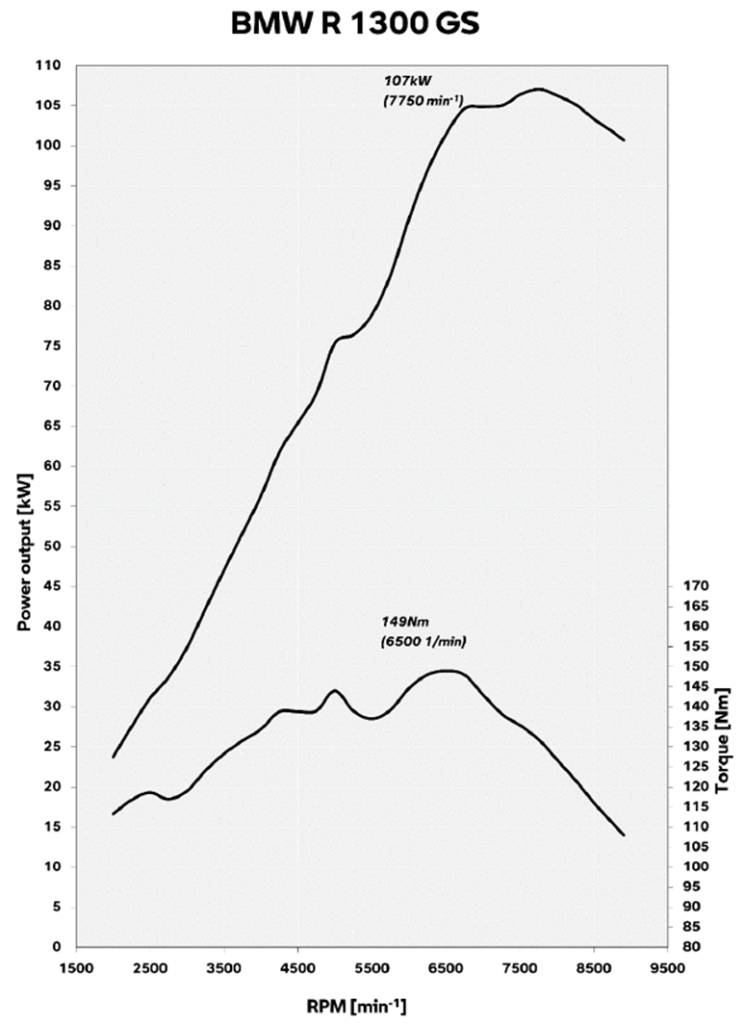
Impressiona particolarmente la curva di coppia, dall’andamento davvero inarrivabile e sempre superiore a 110 Nm da 2.000 giri fino al regime di potenza massima. Il leggero buco di coppia visibile nel grafico intorno ai 5.500 giri è del tutto inavvertibile nella guida.
Il cambio è sempre contenuto nel carter motore, ma adesso è posto sotto all’albero motore anziché arretrato rispetto ad esso. Ne risultano una maggior centralizzazione delle masse, vantaggiosa in termini di maneggevolezza, e, da quel che dice BMW, un angolo di lavoro migliore dei giunti cardanici dell’albero di trasmissione. È da notare il fatto che il cambio è stato spostato in avanti, ma non in basso, perché già sulle R1200/1250 si trovava a un livello inferiore rispetto all’albero motore e ai cilindri. Per tale ragione, l’altezza del motore da terra non sembra essere stata variata.
Abbiamo sottoposto a pesatura la R1300GS (entrambi gli esemplari provati, una Trophy e una Option 719 Tramuntana, a questo link è disponibile la tabella delle moto da noi messe sulla bilancia fino ad oggi). e possiamo confermare che la nuova disposizione della meccanica – tra l’altro, ora il blocco motore è spostato più avanti, vicinissimo alla ruota anteriore – ha modificato sensibilmente la distribuzione del peso, che ora grava per il 52% circa sull’avantreno, contro il 50,6% circa della R1250GS. Inoltre, il baricentro è intorno ai 5 cm più alto rispetto alla R1250GS, probabilmente anche a causa del maggior peso della doppia piastra di sterzo del Telelever Evo. Lo spostamento del peso in alto e in avanti e la sua riduzione complessiva sono tutti elementi che favoriscono la guida sportiva.
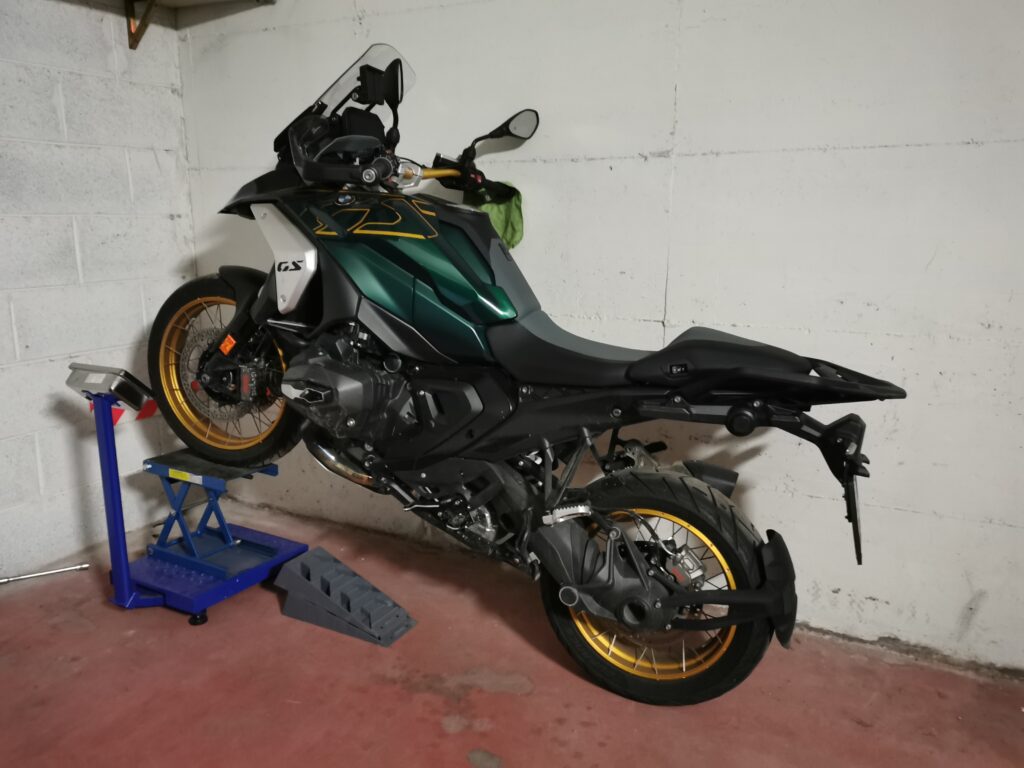
I pesi, rilevati con il serbatoio pieno e senza valigie, sono stati i seguenti:
- R1300GS Trophy 246,9 kg
- R1300GS Option 719 255,2 kg
Una R1250 GS standard da noi pesata due anni totalizzò 259,2 kg. Possiamo dire quindi che, a parità di dotazioni, la R1300GS pesa effettivamente circa una dozzina di chili meno della R1250GS. Il fatto è che la dotazione di accessori è ancora più sterminata che sul modello precedente – basti pensare al parabrezza ad azionamento elettrico, ai radar e al sistema di abbassamento delle sospensioni – perciò la differenza tra un modello strettamente base e un full optional è particolarmente marcata.
Sempre a questo proposito, è da segnalare anche il fatto che adesso la catena cinematica comprende un albero in meno rispetto a prima, perché la frizione è montata sull’albero primario del cambio anziché su un albero dedicato. Per tale ragione, adesso l’albero motore ruota in senso orario (visto dalla parte anteriore), mentre nelle precedenti R raffreddate a liquido girava al contrario. Ecco perché sulla R1300GS una brusca sgasata a moto ferma provoca un leggero spostamento verso destra della moto anziché verso sinistra. In entrambi i casi la spinta è veramente minima e quasi non si nota, ma chi scende da una R1200-1250 si accorge facilmente della differenza.


Parlando di alberi, sembrerebbe assente qualsiasi albero supplementare di smorzamento delle vibrazioni. Uso il condizionale, perché BMW dichiara che un albero c’è, ma ho passato in rassegna l’intero catalogo dei ricambi motore senza trovarlo. Probabilmente, si riferiscono all’albero motore e dell’alternatore, l’unico contrappesato tra quelli a mia conoscenza. Ciò nonostante, questa GS vibra decisamente poco. Come sui precedenti modelli raffreddati a liquido, la coppia di rovesciamento è quasi annullata dalla frizione.
Come sulle precedenti R raffreddate a liquido, la trasmissione della R1300 GS comprende una frizione antisaltellamento a 10 dischi in bagno d’olio azionata idraulicamente, posta nella parte anteriore del carter motore e accessibile tramite un coperchio – sui boxer raffreddati ad aria era necessario staccare l’intero gruppo cambio/trasmissione – un cambio a sei rapporti sempre in presa e un albero con due giunti cardanici integrato nella sospensione Paralever.
A richiesta (solo con il Dynamic Pack) è disponibile il Cambio elettroassistito Pro, cioè il quickshifter di BMW, funzionante anche in scalata e dotato di un nuovo tipo di sensore che dovrebbe (uso volutamente il condizionale) migliorarne la prontezza di funzionamento.
Per quanto concerne la rapportatura, per capirla mi è toccato risolvere un piccolo mistero, una di quelle cose che mi intriga parecchio. La trasmissione di una moto comprende di solito i seguenti elementi:
- la riduzione primaria, cioè quella tra albero motore e albero primario del cambio
- i rapporti del cambio
- la riduzione finale, che sulle moto con trasmissione a catena è data dal rapporto tra corona e pignone, mentre sulle moto con trasmissione ad albero è data dal rapporto della coppia conica posteriore, cioè tra la corona della ruota e il pignone dell’albero motore.
Però in questo caso – come su altre moto con albero cardanico – esiste un’ulteriore riduzione tra l’albero secondario del cambio e l’albero di trasmissione. Di solito il suo valore è riportato tra le specifiche tecniche nel manuale di uso e manutenzione, ma in quello della R1300GS non c’è, né esso si trova nella cartella stampa.
I rapporti pubblicati da BMW sono i seguenti:
riduzione primaria 1,479
- 2,438
- 1,714
- 1,296
- 1,059
- 0,906
- 0,794
riduzione finale 2,910.
Se andiamo a calcolare le velocità effettive della moto a partire dai soli dati pubblicati, tenendo ovviamente conto del diametro della ruota posteriore, i risultati non tornano. Per esempio, la velocità in sesta marcia a 4.000 giri dovrebbe essere leggermente superiore a 140 km/h, mentre in realtà è di circa 116 km/h effettivi (119 km/h indicati).

Nello spaccato della trasmissione pubblicato dalla casa, la riduzione è chiaramente visibile.

Quest’altra immagine, proveniente dal catalogo delle parti di ricambio, consente di capire facilmente che l’ingranaggio più grande, quello collegato al cardano (n. 3), ha 45 denti. Più difficile contare i denti dell’ingranaggio inferiore (n. 6, munito di parastrappi), che dalla vista in assonometria potrebbero essere 37, 38 o 39.

Per fare quadrare i conti, l’ingranaggio n. 6 deve avere 37 denti. In tal modo, il rapporto di riduzione risulterebbe pari a 45/37 = 1,21621 e le velocità risultanti nelle varie marce coinciderebbero con quelle rilevate durante la guida.
Fatta questa premessa, la tabella seguente mostra le velocità nei singoli rapporti:
- a 1.000 giri
- al regime in cui il motore inizia a spingere forte
- al regime di potenza massima
- al limitatore.
| Marcia | Velocità a 1.000 giri/’ | Velocità a 2.500 giri/’ | Velocità a 7.750 giri/’ | Velocità a 9.000 giri/’ |
| 1a | 9,4 | 23,5 | 72,8 | 84,6 |
| 2a | 13,4 | 33,4 | 103,5 | 120,2 |
| 3a | 17,7 | 44,2 | 136,9 | 159,0 |
| 4a | 21,6 | 54,1 | 167,6 | 194,7 |
| 5a | 25,3 | 63,2 | 195,9 | 227,5 |
| 6a | 28,8 | 72,1 | 223,5 | 259,6 (teorica) |
Rispetto alla R1250GS, le velocità nelle prima quattro marce sono praticamente le stesse, mentre quinta e sesta sono state sensibilmente allungate. Il limitatore è fissato a 9.000 giri e il motore ci arriva con una certa facilità, mostrando un allungo piuttosto interessante.
ADAS (aiuti elettronici alla guida)
Dal punto di vista degli aiuti elettronici alla guida, la R1300GS offre di serie quanto segue.
- DTC (Dynamic Traction Control) – Sistema antipattinamento. Può essere disinserito e si riattiva a ogni spegnimento del quadro.
- ABS Pro – Sistema frenante antibloccaggio con controllo del sollevamento della ruota posteriore e Funzione cornering, che riduce la potenza frenante iniziale all’anteriore quando la moto è inclinata e serve a limitare al massimo gli effetti di un azionamento troppo brusco del freno anteriore in curva.
- Modalità di marcia:
- ECO per la massima economia di carburante,privilegial’uso delle camme di carico parziale del sistema ShiftCam e comprende una barra verde sul cruscotto che mostra la quantità di coppia disponibile prima che il sistema sia costretto a passare alle camme di pieno carico
- Rain per la guida su fondi bagnati e sdrucciolevoli
- Road per la guida su strada asciutta
- Enduro per l’uso in fuoristrada con gomme stradali.
- HSC (Hill Start Control) – Assistente alla partenza in salita, permette di inserire e mantenere automaticamente il freno a moto ferma tirando con forza la leva del freno anteriore, con il vantaggio di avere le mani libere e di semplificare le partenze in salita.
- DBC (Dynamic Brake Control) – Funzione attiva in caso di frenate di emergenza, che agisce in due modi:
- rileva se il gas è erroneamente aperto durante la frenata e lo azzera, migliorando in tal caso la stabilità della moto e gli spazi di frenata
- nel caso di frenata di emergenza poco decisa, aumenta la pressione nel circuito frenante posteriore, accorciando gli spazi di frenata senza compromettere la stabilità.
- Cruise control – Sul sito web il ACC (Active Cruise Control) è elencato tra gli accessori di serie, ma è un errore: è presente solo il cruise control normale, che diventa Active solo se si acquista il Riding Assistant (vedi spiegazione nel seguito),
- MSR (Motor Schleppmoment Regelung, chissà perché l’acronimo è in tedesco) – Sistema che regola automaticamente il freno motore, diminuendolo (cioè, dando gas) in caso di brusche scalate in modo da evitare il pattinamento della ruota posteriore.
A richiesta è disponibile quanto segue.
- Cambio elettro-assistito Pro – Assistente alla cambiata, consente in molte situazioni di cambiare senza frizione e funziona sia a salire di rapporto che in scalata.
- DSA (Dynamic Suspension Adjustment) – Sistema di sospensioni autoadattive, descritto nel paragrafo dedicato alle sospensioni.
- Controllo adattivo altezza – Sistema di regolazione automatica dell’altezza della moto. È disponibile solo se è presente il DSA ed è descritto nel paragrafo dedicato alle sospensioni.
- Modalità di marcia Pro – Sono le seguenti: Dynamic per la guida sportiva, Dynamic Pro per la guida sportiva, personalizzabile, e Enduro Pro per la guida in fuoristrada con gomme tassellate, personalizzabile. In presenza delle modalità di marcia Pro è attivo anche l’HSC Pro, funzione dell’assistente alla partenza in salita che ne consente l’inserimento automatico nelle circostanze in cui è utile, senza necessità di tirare la leva del freno con forza, disinseribile da menù.
- Riding Assistant – Sistema di aiuti alla guida basato sulla presenza di due radar, anteriore e posteriore, che comprende le seguenti funzioni.
- ACC (Active Cruise Control) – Controllo della velocità attivo. Se il veicolo che precede è più lento della velocità impostata, il sistema rallenta la moto in modo da mantenere una distanza di sicurezza scelta tra tre diverse opzioni, per poi riaccelerare fino alla velocità impostata qualora il veicolo antistante acceleri o una volta cambiata corsia. L’accensione della freccia prima di iniziare il sorpasso fa accelerare automaticamente la moto prima del cambio di corsia. Il sistema può essere disattivato e in tal caso rimangono tutte le funzioni del cruise control normale. L’impostazione memorizzata viene mantenuta alla riaccensione del quadro.
- FCW (Frontal Collision Warning) – Sistema di avviso di collisione frontale che, nel caso che ci si avvicini a un veicolo più lento antistante, fornisce due livelli di avvertimento: preallarme, con un avviso sul cruscotto e una leggera pinzatina del freno per attirare l’attenzione, e allarme acuto, con un avviso sul cruscotto più evidente e il supporto alla frenata, che avvia una leggera frenata eliminando il tempo di reazione del pilota, ma non si sostituisce al pilota nell’esecuzione della frenata di emergenza. Il FCW monitora l’attenzione del pilota in base al comportamento alla guida e il suo intervento può essere impostato su tre livelli: anticipato, medio e tardivo. Può essere disattivato in blocco, oppure è possibile mantenere gli avvisi sul cruscotto ed escludere gli interventi sulla frenata. Le impostazioni scelte vengono mantenute alla riaccensione del quadro.
- SWW (Spurwechselwarnung, altro acronimo in tedesco) – Sistema di avviso di cambio corsia, informa se ci sono veicoli negli angoli ciechi latero-posteriori e prevede due livelli di allarme: avvertenza informativa, che accende un triangolo giallo nello specchietto in presenza di veicoli nell’angolo cieco corrispondente, e allarme acuto che fa lampeggiare il triangolo nello specchietto se, in presenza di un veicolo, il pilota inserisce l’indicatore di direzione dallo stesso lato. Il sistema può essere disattivato in blocco, oppure è possibile mantenere il solo allarme acuto. Le impostazioni vengono mantenute alla riaccensione del quadro.
La scelta dei riding mode influisce su tutti gli aiuti elettronici, inclusa la ripartizione della frenata, per armonizzarli tra loro nelle diverse situazioni. Di seguito le configurazioni previste in tutti i riding mode.
Eco
- risposta moderata dell’acceleratore
- ABS in modalità Road tarato per l’uso su strada
- anti-sollevamento della ruota posteriore regolato al massimo
- ABS Pro (funzione cornering) pienamente attivo
- Ripartizione della forza frenante massima tra le due ruote
- DTC tarato per l’uso su strada con pneumatici stradali con intervento ritardato rispetto a Rain, ma che comunque impedisce per quanto possibile lo slittamento della ruota posteriore
- anti-sollevamento della ruota anteriore attivo
Rain
- risposta morbida dell’acceleratore
- ABS in modalità Road tarato per l’uso su strada
- anti-sollevamento della ruota posteriore regolato al massimo
- ABS Pro (funzione cornering) pienamente attivo
- Ripartizione della forza frenante massima tra le due ruote
- DTC tarato per l’uso su strada con pneumatici stradali con intervento immediato per garantire la massima stabilità di marcia
- anti-sollevamento della ruota anteriore attivo
Road
- risposta normale dell’acceleratore
- ABS in modalità Road tarato per l’uso su strada
- anti-sollevamento della ruota posteriore regolato al massimo
- ABS Pro (funzione cornering) pienamente attivo
- Ripartizione della forza frenante massima tra le due ruote
- DTC tarato per l’uso su strada con pneumatici stradali con intervento ritardato rispetto a Rain, ma che comunque impedisce per quanto possibile lo slittamento della ruota posteriore
- anti-sollevamento della ruota anteriore attivo
Dynamic
- risposta diretta dell’acceleratore
- ABS in modalità Dynamic tarato per l’uso su strada
- anti-sollevamento della ruota posteriore che consente un leggero sollevamento
- ABS Pro (funzione cornering) a funzionalità ridotta
- Ripartizione della forza frenante ridotta tra le due ruote
- DTC tarato per l’uso su strada con pneumatici stradali posticipato rispetto alle modalità di marcia Eco, Road e Dynamic Pro, in modo da consentire leggeri drifting all’uscita delle curve
- anti-sollevamento della ruota anteriore che consente brevi impennate in uscita di curva
Dynamic Pro
- risposta diretta dell’acceleratore, personalizzabile nel menù Setup
- ABS in modalità Dynamic tarato per l’uso su strada e personalizzabile nel menù Setup
- anti-sollevamento della ruota posteriore che consente un leggero sollevamento
- ABS Pro (funzione cornering) a funzionalità ridotta
- Ripartizione della forza frenante ridotta tra le due ruote
- DTC tarato per l’uso su strada con pneumatici stradali con intervento ritardato rispetto a Rain, ma che comunque impedisce per quanto possibile lo slittamento della ruota posteriore
- anti-sollevamento della ruota anteriore attivo, il tutto personalizzabile nel menù Setup
Enduro
- risposta morbida dell’acceleratore
- ABS in modalità Enduro tarato per l’uso in fuoristrada con pneumatici stradali
- anti-sollevamento della ruota posteriore che consente un leggero sollevamento
- ABS Pro (funzione cornering) a funzionalità ridotta
- Ripartizione della forza frenante ridotta tra le due ruote e tarata per l’uso in fuoristrada
- DTC tarato per l’uso in fuoristrada con pneumatici stradali
- anti-sollevamento della ruota anteriore che consente brevi impennate in uscita di curva
Enduro Pro
- risposta normale dell’acceleratore, personalizzabile nel menù Setup
- ABS in modalità Enduro Pro tarato per l’uso in fuoristrada con pneumatici tassellati, disinserito sulla ruota posteriore e personalizzabile nel menù Setup
- anti-sollevamento della ruota posteriore disattivato
- ABS Pro (funzione cornering) disattivato
- Ripartizione della forza frenante sbilanciata al massimo verso il posteriore usando la leva al manubrio e frenata esclusivamente sul posteriore usando il pedale
- DTC tarato per l’uso in fuoristrada con pneumatici tassellati
- anti-sollevamento della ruota anteriore disattivato, il tutto personalizzabile nel menù Setup
Freni
La R1300GS è equipaggiata con i tradizionali due dischi anteriori da 310 mm con pinze radiali fisse Brembo a quattro pistoncini (l’esperienza con Hayes sembra essere conclusa).
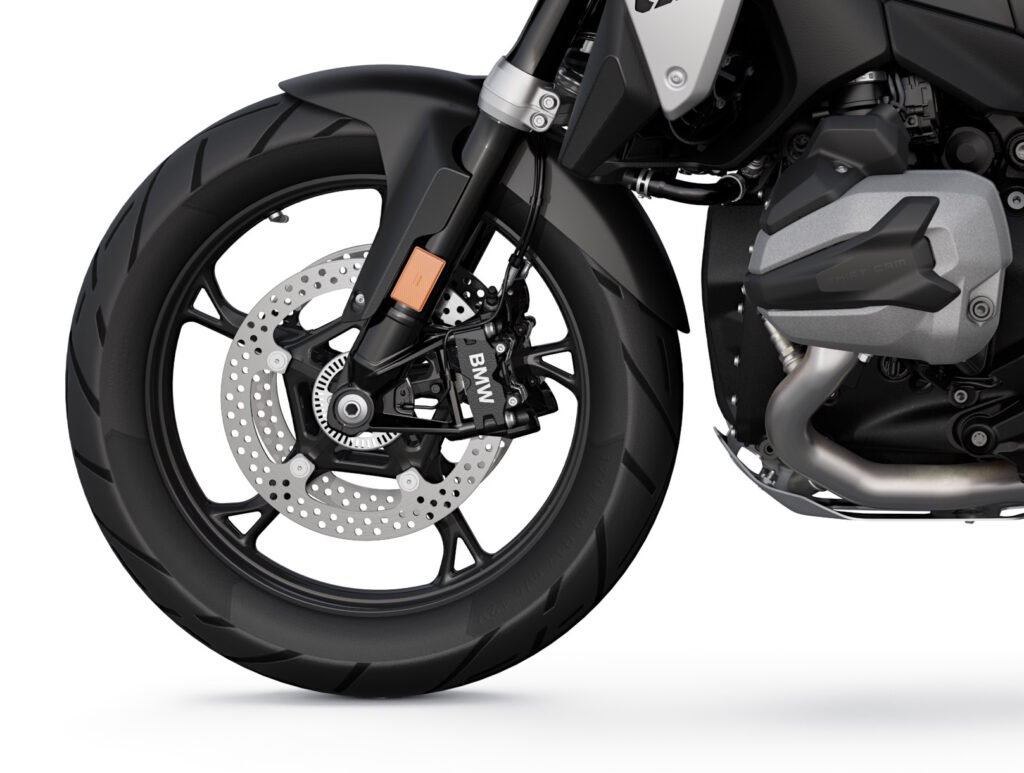
Al posteriore c’è un disco da 285 mm con pinza flottante a due pistoncini. Entrambi i freni sono azionati da pompe tradizionali attraverso tubi in treccia metallica.
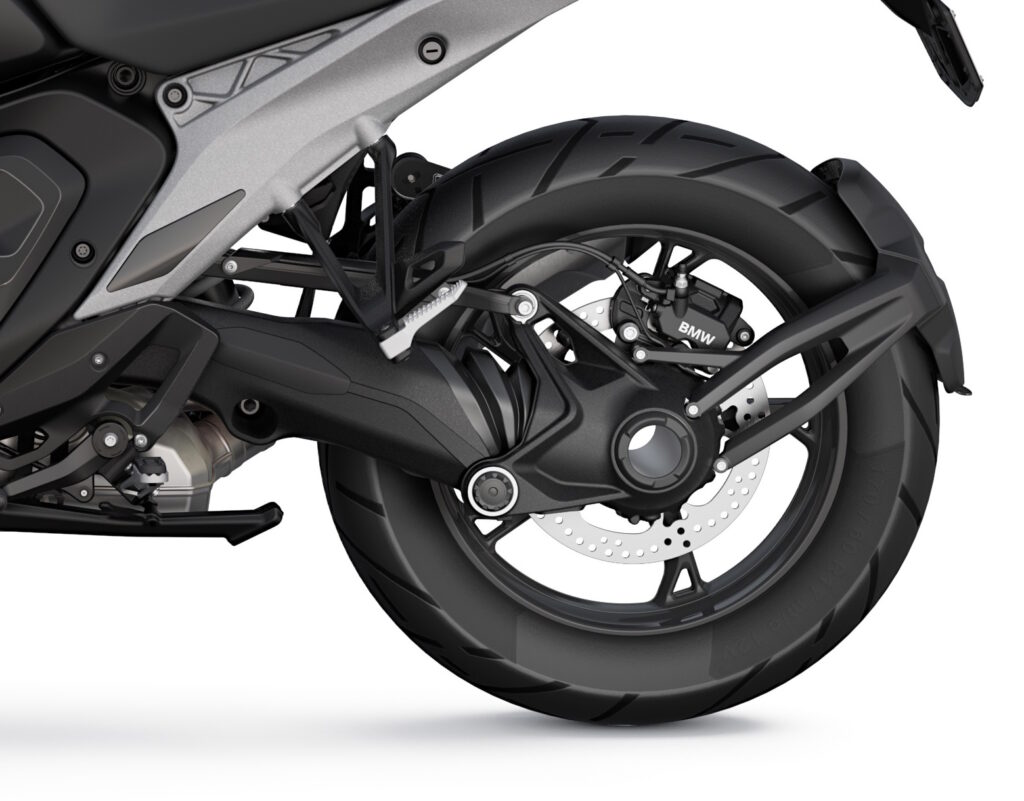
L’impianto ABS di serie è di tipo completamente integrale. Come sempre in BMW, i due circuiti frenanti sono idraulicamente indipendenti, mentre la funzione integrale è ottenuta mediante la pompa dell’ABS e quindi è attiva solo a quadro acceso. La ripartizione della frenata non è fissa, ma in funzione del carico, del comando utilizzato e anche della modalità di marcia selezionata, come spiegato nel paragrafo dedicato agli ADAS.
Comandi
I blocchetti dei comandi della R1300S sono esteticamente simili a quelli precedenti, ma il layout dei tasti è stato rivisto. Sono sempre privi di retroilluminazione, ma sono tutto sommato pochi e dopo un minimo di apprendistato si trovano subito anche al buio senza difficoltà.

Il blocchetto destro contiene quanto segue.
- Il tasto di gestione del quadro e del bloccasterzo, che non può più essere alloggiato sulla piastra di sterzo, a causa della particolare geometria del Telelever EVO. Ha preso il posto del tasto per gestire le manopole riscaldabili – che quindi devono essere controllate attraverso il menù oppure eventualmente mediante l’interruttore multifunzione – e funziona come di consueto: una pressione breve accende o spegne solo il quadro, mentre pressione lunga inserisce o disinserisce anche il bloccasterzo.
- Il tasto per la selezione dei Riding Mode. Consente di scegliere rapidamente fra un massimo di quattro riding mode, che possono essere preselezionati tra quelli disponibili mediante il menu Impostazioni.
- Il tasto rosso a bilanciere per l’accensione e lo spegnimento del motore.
Un blocchetto separato più interno alloggia il sistema di chiamata d’emergenza E-Call, il cui tasto è coperto da un coperchio con la scritta SOS in campo rosso. Come sempre, il sistema comprende un microfono, un altoparlante e una SIM dedicata, e si attiva in automatico in caso di caduta o collisione importante, oppure può essere attivato premendo il pulsante.
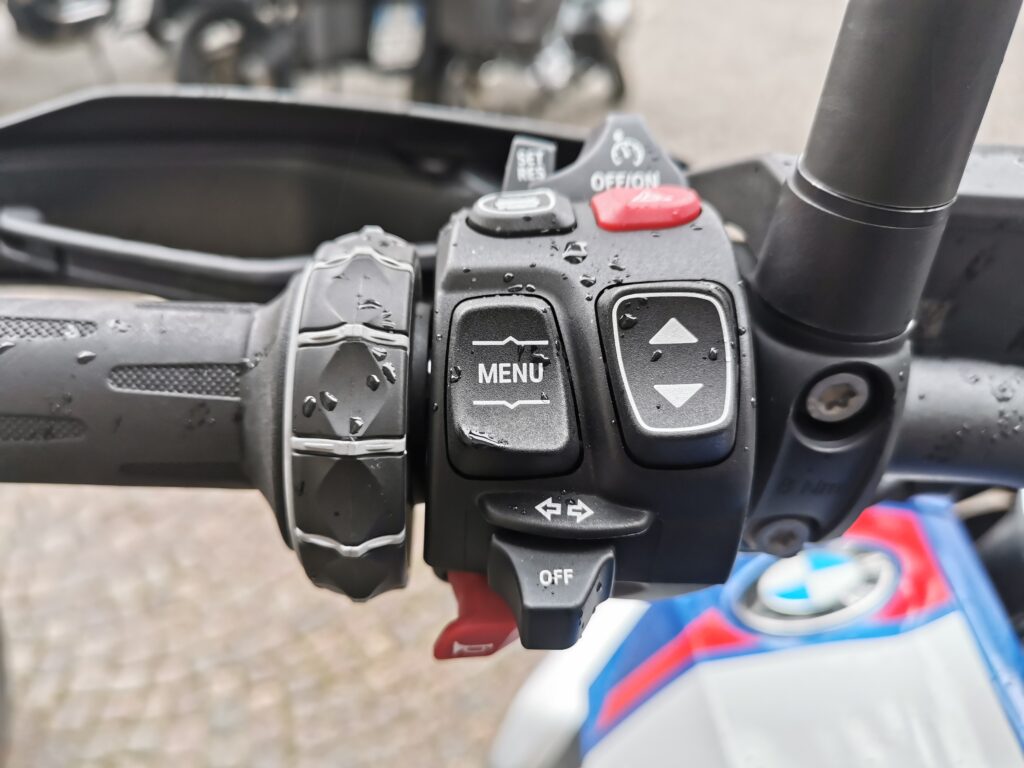
Il blocchetto sinistro contiene quanto segue.
- La ghiera del Multi-Controller. Ruotandola, si sceglie una voce da una lista, premendola verso destra si conferma la scelta, premendola verso sinistra si esce dalla selezione.
- Il comando delle frecce. Il menù Impostazioni consente di attivare o disattivare la funzione Comfort, cioè lo spegnimento automatico in base al percorso. Una pressione prolungata del tasto verso sinistra dopo aver spento il quadro accende le luci di parcheggio, che poi si spengono alla riaccensione del quadro.
- Il tasto del clacson.
- Il tasto rosso per le quattro frecce.
- Il tasto a bilanciere di selezione dei menu. Premendolo verso il basso si accede al menu delle schermate e, dopo aver selezionato la schermata voluta con il Multi-Controller, si scende nei vari sottomenù, mentre premendolo verso l’alto si risale di livello. Da qualsiasi schermata o menù, una pressione prolungata verso l’alto riporta immediatamente alla schermata di base Pure Ride.
- Il tasto di elenco delle funzioni (tasto piccolo bordato bianco), con cui è possibile assegnare all’interruttore multifunzione (descritto qui di seguito) due funzioni a scelta tra le seguenti
- regolazione della distanza di sicurezza dell’ ACC
- regolazione del riscaldamento di manopole e sella del pilota (la sella del passeggero è dotata di un comando azionabile dal passeggero)
- regolazione in altezza del parabrezza optional
- regolazione del DTC
- regolazione del molleggio
- L’interruttore a bilanciere multifunzione (bordato bianco con due frecce), attraverso il quale è possibile gestire la funzione primaria assegnata con il tasto elenco delle funzioni e, tenendo premuto quest’ultimo, la funzione secondaria.
- Il comando del cruise control. Funziona come segue:
- lo spostamento del cursore a destra e a sinistra comanda l’accensione e lo spegnimento del sistema
- una pressione breve sulla levetta in avanti imposta la velocità corrente
- a velocità impostata:
- una pressione breve sulla levetta in avanti aumenta la velocità di 1 km/h, mentre una pressione prolungata la aumenta a salti di 10 km/h.
- una pressione breve sulla levetta all’indietro diminuisce la velocità di 1 km/h, mentre una pressione prolungata la diminuisce a salti di 10 km/h.
- se si accelera, la velocità impostata viene tenuta in memoria e viene ripristinata quando si rilascia il gas
- se si frena oppure si forza la chiusura del gas oppure si tira la frizione per più di un secondo e mezzo, la regolazione della velocità viene disinserita
- tirando brevemente la levetta si ripristina la velocità precedentemente memorizzata.
A differenza che sui modelli precedenti, il cruise control mantiene la velocità impostata anche quando si cambia marcia.
Se è presente l’ACC, i comandi restano gli stessi, ma il cruise control riduce la velocità in presenza di un veicolo più lento che precede. La regolazione della distanza di sicurezza viene effettuata attraverso il Menù impostazioni oppure eventualmente attraverso il tasto multifunzione.
Il nuovo sistema basato sull’accoppiata tasto elenco delle funzioni + interruttore multifunzione, che consente l’accesso rapido a due funzioni a scelta, costituisce una novità interessante, che compensa in parte l’assenza di tasti dedicati ad alcune singole funzioni.
Strumentazione
La R1300GS monta di serie la strumentazione TFT a colori con display da 6,5” tipica dell’attuale produzione BMW. La visualizzazione di base, chiamata Pure Ride, comprendente il contagiri analogico perimetrale, la velocità in cifre e le principali informazioni, e ad essa si torna rapidamente da qualsiasi altra visualizzazione, tenendo premuto in alto il tasto Menu.
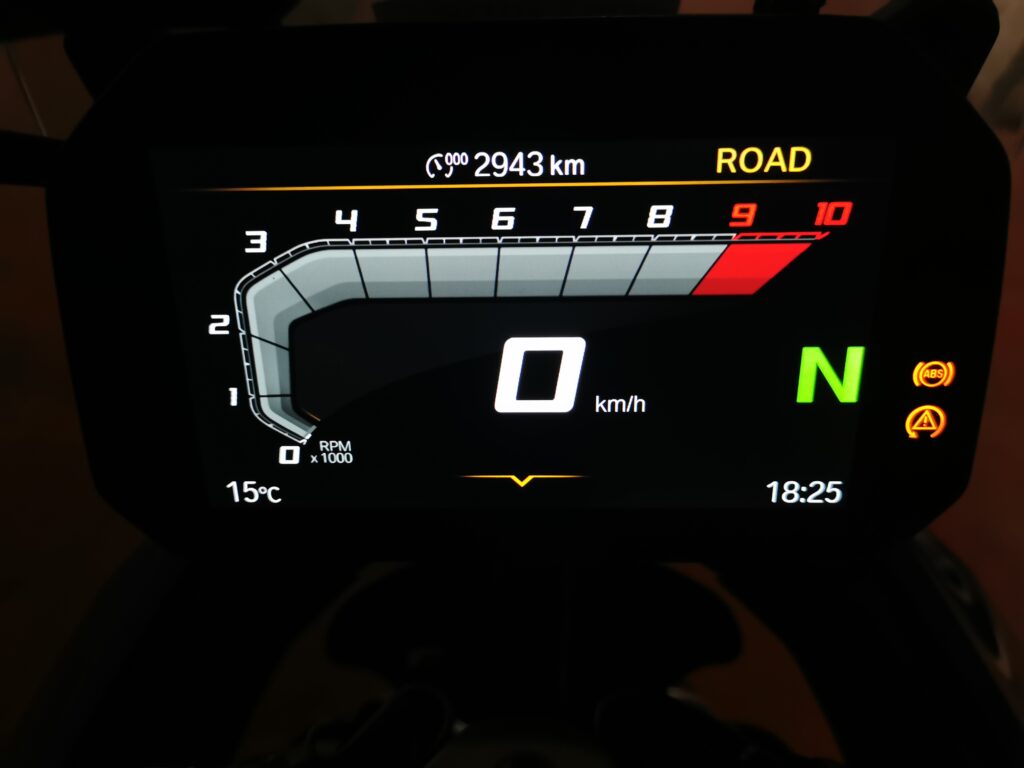
Premendo in basso lo stesso tasto si accede alle seguenti schermate:
- Sport, in cui il contagiri è centrale e semicircolare, con al centro l’indicatore degli angoli di piega istantanea e massima sui due lati, e ai lati quelli della decelerazione massima in frenata in metri al secondo quadrato e della percentuale di coppia massima tagliata dal sistema di antipattinamento ASC
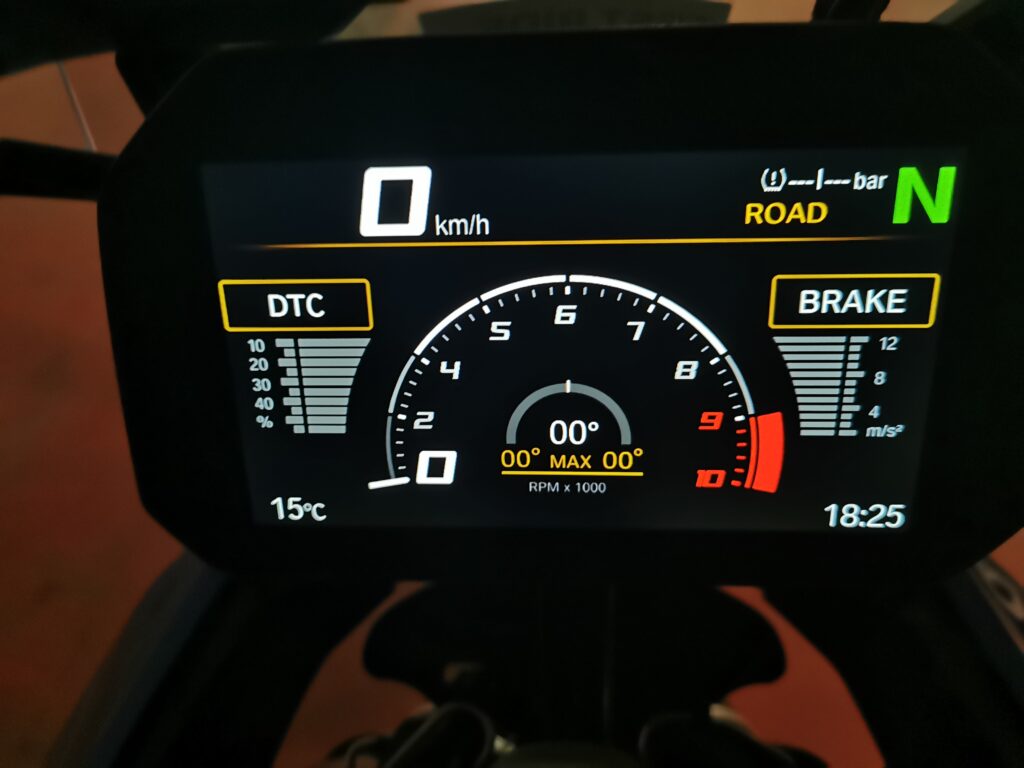
- Mio Veicolo, che comprende le schede:
- Il mio veicolo
- Computer di bordo
- Computer di viaggio
- Pressione gonfiaggio pneumatici
- Necessità di manutenzione
- Impostazioni, in cui si impostano i parametri di tutte le funzioni di bordo.
VI sono inoltre altre tre visualizzazioni, accessibili quando è stato effettuato il collegamento a uno smartphone con installata la app BMW Connect:
- Navigazione
- Telefono (richiede che sia collegato anche un casco)
- Media (idem).
Illuminazione
La R1300GS dispone di serie di un impianto d’illuminazione full led e a richiesta dell’Headligh Pro, cioè le luci adattive che si accendono a moto inclinata e consentono una migliore illuminazione della traiettoria in curva.

Il gruppo ottico è nuovo e originale, a forma di X e composto da un elemento centrale per abbagliante e anabbagliante e da quattro elementi radiali, dedicati alle luci diurne e di svolta. La regolazione in altezza avviene attraverso una vite. BMW ha perso la buona abitudine di installare una levetta per la commutazione rapida in due posizioni standard, che consente di non toccare la regolazione base nel caso che si ospiti un passeggero al volo senza regolare il precarico della sospensione posteriore. Fortunatamente, la maggior parte delle GS vendute ha le sospensioni autolivellanti DSA.
Attraverso il menu Impostazioni della strumentazione è possibile impostare per default l’anabbagliante sempre acceso o la luce diurna a commutazione automatica. Il pulsante per scegliere manualmente tra le due modalità è stato eliminato e non credo che se ne sentirà la mancanza.
Potenza, ampiezza e omogeneità del nuovo faro sono eccellenti, inclusa l’illuminazione adattiva, molto ampia e potente.

Al posteriore spicca l’assenza di un gruppo ottico centrale, tutte le luci sono integrate negli indicatori di direzione. La loro visibilità è comunque buona anche di giorno, ma preferirei comunque avere uno stop grande, come avviene sulla R1250GS.

Posizione di guida
La posizione di guida è ovviamente ottima, per l’azzeccata triangolazione sella-pedane-manubrio, che consente una postura rilassata, anche se non eccessivamente turistica. Non ho effettuato misurazioni precise, ma penso che la posizione non sia molto diversa da quella che si ha sulla R1250GS.
La sella standard non è morbida, ma neanche scomoda, è piatta e consente la più ampia libertà di movimento al pilota. Non è prevista alcuna regolazione in altezza, ma a richiesta con 50 Euro è possibile avere la sella confort alta, standard o bassa. Le altezze della seduta possibili nelle varie configurazioni sono le seguenti:
- sella bassa 830 mm
- sella standard 850 mm
- sella alta 870 mm.
Fatto piuttosto interessante: una levetta posta sotto la sella del pilota consente di modificarne il profilo dell’imbottitura, rendendola più o meno abbondante nella parte posteriore.
Con il controllo adattivo dell’altezza la seduta si abbassa a moto ferma di 30 mm, quindi fino a un minimo di 800mm. Per tale ragione, non è più disponibile un assetto delle sospensioni ribassato.
Al contrario, con le sospensioni Sport, pensate per il fuoristrada più duro e disponibili solo in abbinamento con le sospensioni adattive DSA e senza controllo adattivo dell’altezza, l’altezza cresce di 25 mm.
Particolare interessante: se è presente il riscaldamento optional, tutte le selle sono più alte di 10 mm.
Gli specchi sono quelli standard BMW, un po’ piccoli, ma ben distanziati, si trovano ad altezza tale da non interferire con quelli delle auto, non vibrano e consentono una visuale sufficiente.
Passeggero
Per quanto riguarda il passeggero, di base la R1300GS prevede una sistemazione piuttosto spartana, più da naked che da crossover, con una sella piuttosto dura e sottile, pedane di alluminio non troppo distanti dalla seduta e maniglie molto ravvicinate, quasi sotto al sedere.
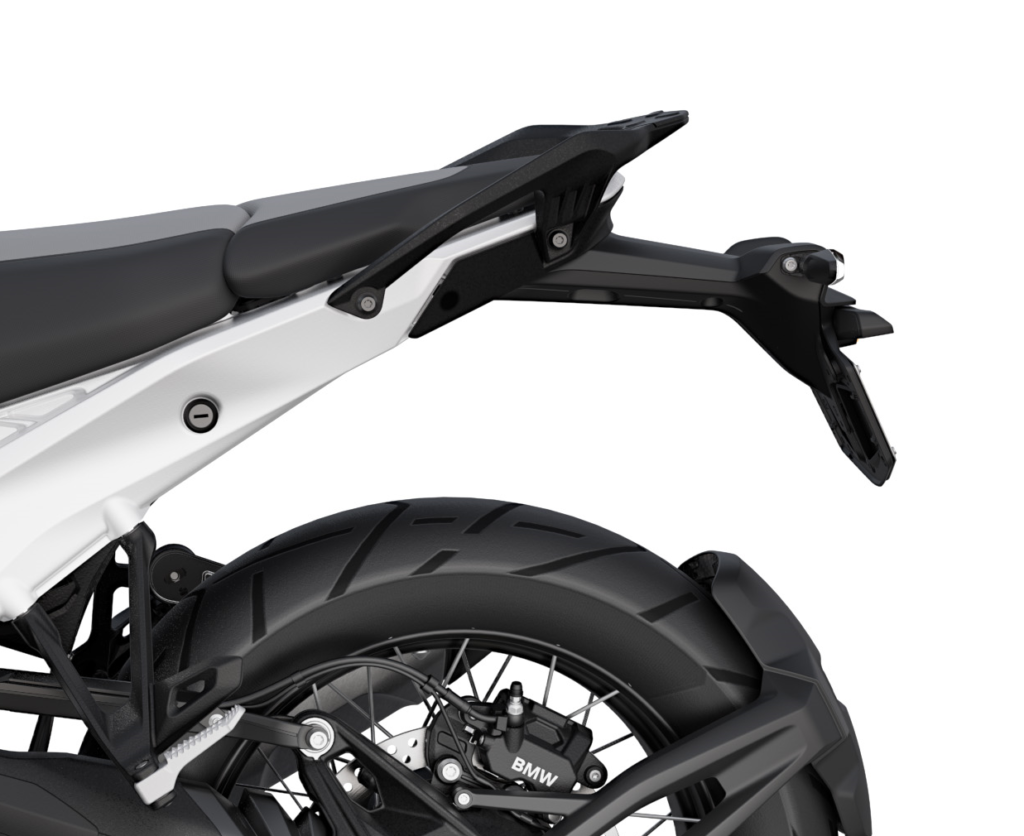
È anche disponibile una piastra portabagagli da montare al posto della sella posteriore.
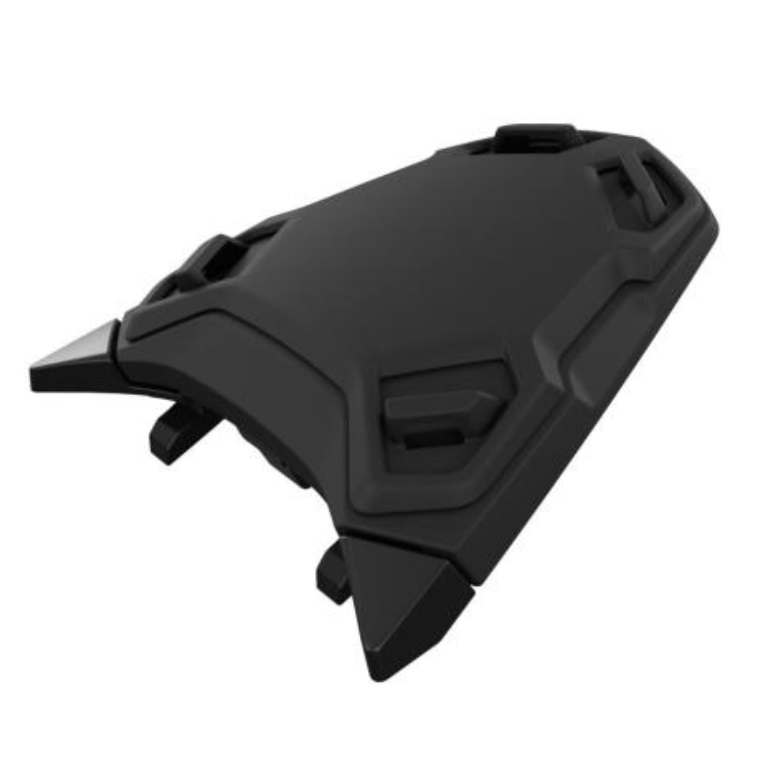
In alternativa è disponibile il kit passeggero (di serie sulle varianti Triple Black e Option 719 Tramuntana), che con 100 Euro prevede una sella molto più alta e comoda e regolabile longitudinalmente (con un sistema a molla piuttosto ingegnoso e senza dover smontare la sella), il portapacchi con ampie maniglie e pedane con rivestimento in gomma smontabile, che vista la maggior altezza della sella, risultano ben più distanti e comode.
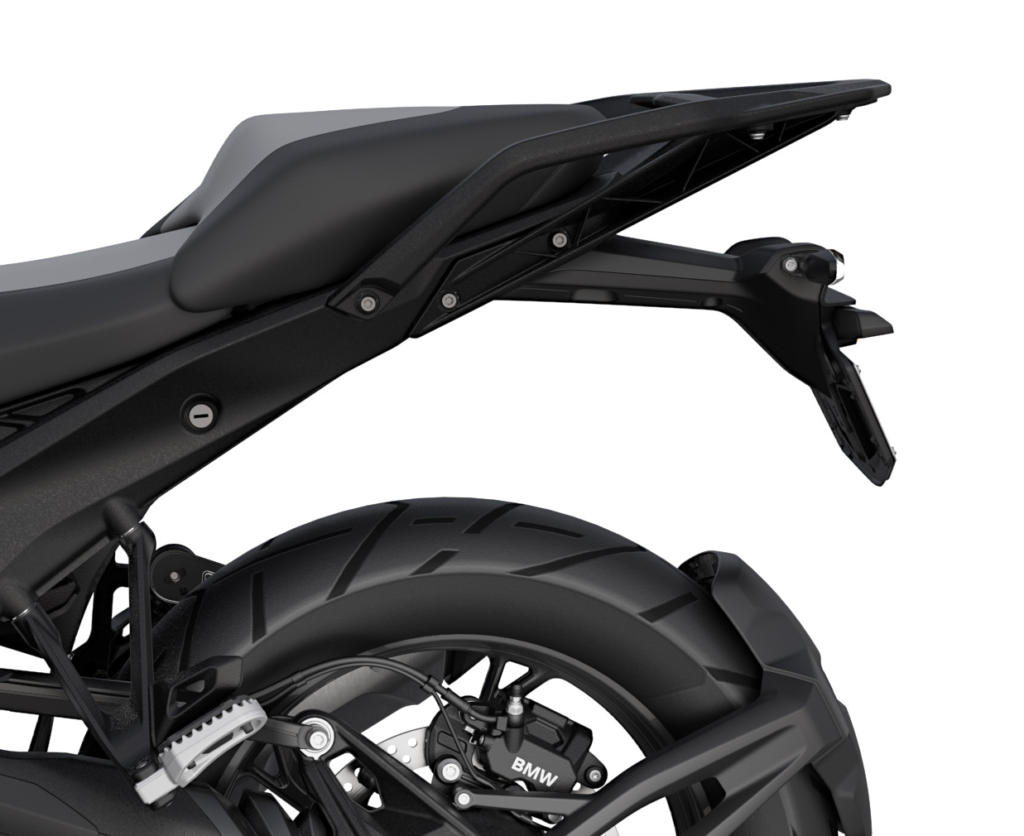
Rispetto alla R1250GS, la sella del passeggero è in ogni caso un po’ più stretta e corta.
Capacità di carico
Le nuove valigie Vario sono completamente diverse dalle precedenti e, ovviamente, non compatibili con esse. Sono trapezoidali e non ad angoli retti e hanno perso in parte il caratteristico look Bosch che le aveva sempre caratterizzate fin dalla prima R1200GS del 2004. Sono sempre regolabili, non più in due posizioni mediante una leva perimetrale, ma in modo continuo con un pomello, e sono dotate di chiusura centralizzata – che si apre all’accensione del quadro e può essere chiusa a scelta in automatico allo spegnimento del quadro o con il telecomando della chiave keyless – di illuminazione interna e di prese USB poste nel topcase e nella valigia sinistra.
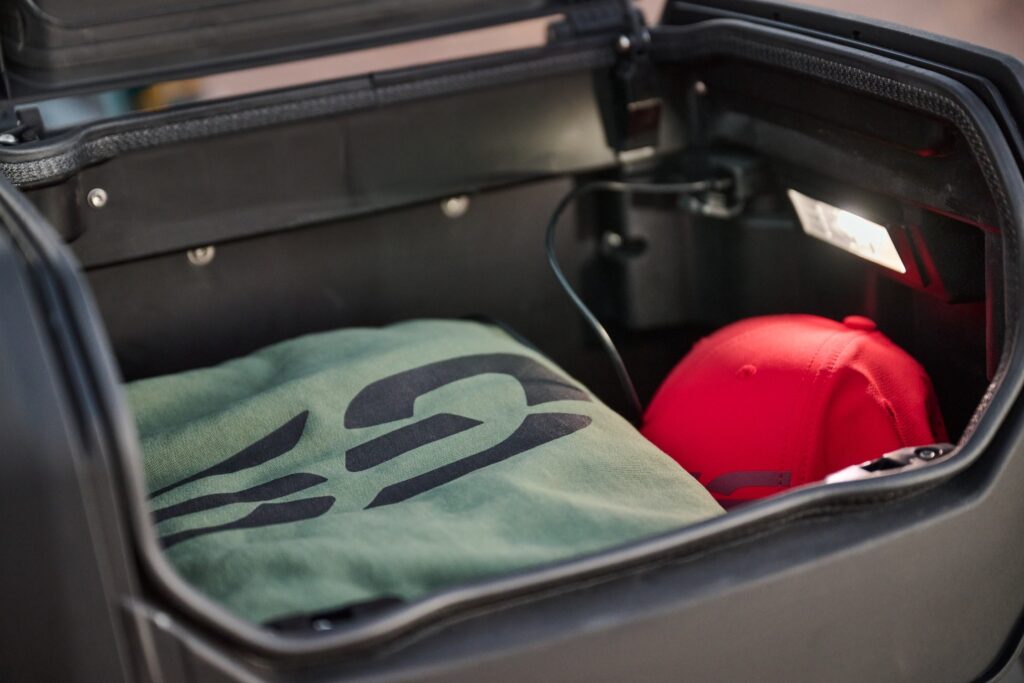
Per quanto riguarda la capienza delle valigie, quasi tutti i siti specializzati scrivono che le esse variano da 49 a 55 litri l’una (!) e il top case da 28 a 36 litri, per un totale massimo di 98 litri (sic). A parte lo svarione di aritmetica, non so da dove abbiano pescato questi dati. In realtà, BMW dichiara da 24 a 30 litri per la valigia sinistra e da 25 a 32 litri per la valigia destra. Tutti sono concordi comunque sul top case, che contiene da 28 a 36 litri, e sulla capienza massima complessiva, che effettivamente è pari a 98 litri. È interessante notare che sulle R1200/1250GS la capienza totale massima delle Vario è 103 litri, di cui 35 nel topcase.

Sono inoltre disponibili varie serie di borse morbide e il mercato dell’aftermarket offre già numerosi tipi di valigie di alluminio.
Oltre alle valigie, sulla R1300 GS è presente un comodo e ben fatto vano per lo smartphone, dotato di un tappetino morbido in gomma e di una presa USB retrattile per la ricarica. Non c’è serratura, ma il manubrio nella posizione di bloccasterzo ne impedisce l’apertura.
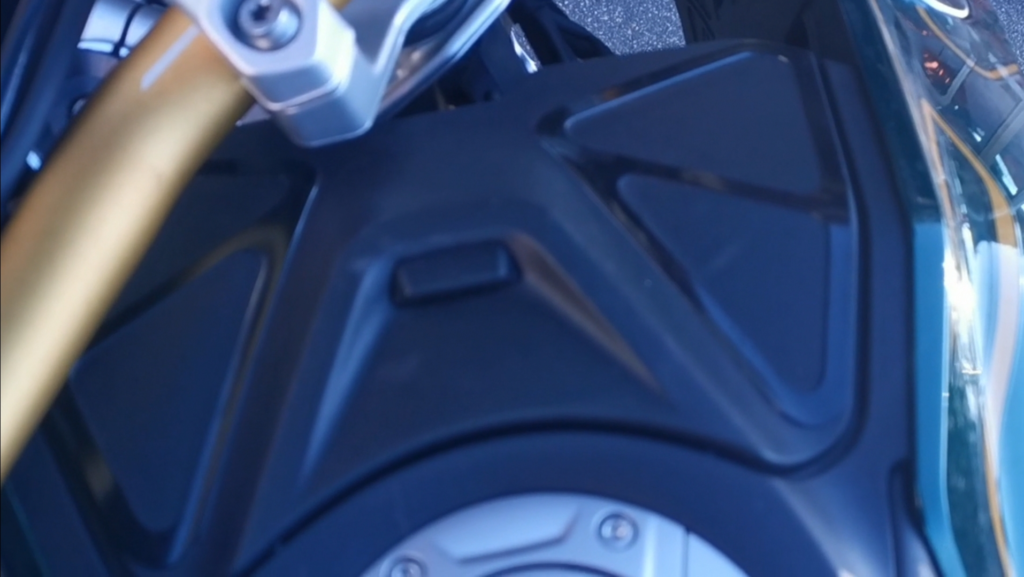
Come va
Motore
L’avviamento è particolarmente pronto, come su tutti i motori BMW più recenti. La rumorosità meccanica è messa in evidenza dallo scarico molto silenzioso, ma a mio avviso il nuovo boxer non produce più quello sferragliamento che in particolare si notava nel motore 1200 raffreddato a liquido e, in misura minore, nel 1250.
L’erogazione è perfetta, non ho mai avuto rifiuti né sussulti di alcun genere, la risposta al gas è sempre esattamente quella che ci si aspetta.
L’accelerazione tirando le marce è davvero esaltante. La ruota anteriore tende ad alzarsi con veemenza in prima e seconda perfino in modalità ECO, nonostante la lieve riduzione della coppia che essa dovrebbe comportare – a ulteriore dimostrazione del fatto che le moto di questa categoria hanno molta più potenza di quella che veramente serve – e la spinta rimane impressionante fino ad almeno 200 km/h.



Facendo qualche confronto in casa BMW, l’accelerazione fino a circa 120 km/h è grosso modo la stessa che si può ottenere con la R1250GS e la S1000XR, mentre man mano che si sale oltre la 1300 è più scattante della 1250 e meno della S1000. Il paragone con la mia K1200GT è altrettanto interessante: la R1300GS è sensibilmente più rapida della K fino a 180 km/h, dopodiché cede il passo alla migliore aerodinamica della grossa tourer. Non ho mai preso i dati di accelerazione delle Ducati Multistrada né delle KTM 1290, ma sono certissimo che fino a 140 km/h non sono migliori della GS, stanti la coppia prepotente e la rapportatura corta delle marce basse di quest’ultima, e che la loro maggior cavalleria emerge solo al di sopra di tali velocità.
Il motore gira piuttosto bene anche i bassi, tanto che è possibile spalancare il gas da 50 km/h in 6a – corrispondenti a soli 1700 giri. A partire da tale velocità, la spinta è inizialmente regolare e potente, ma non potentissima, ma già tra i 60 e i 70 km/h diventa davvero poderosa. Da lì in poi, la coppia cresce parallelamente all’aumento della resistenza e quindi produce una spinta praticamente costante fino ai 200 km/h. Con questa moto, a partire dai 70 km/h si può ingranare la 6a e dimenticarsi completamente dell’uso del cambio, anche per effettuare un sorpasso impegnativo.


Per fare qualche confronto, la R1300GS passa da 50 a 180 km/h in 6a in 13,15 s, contro 16,75 s della K1200GT e 15,57 s della Moto Guzzi V100 Mandello.
La risposta alla rotazione della manopola del gas è dolce in Rain e in Eco, un po’ più pronta in Road e ancora un po’ più pronta in Dynamic e Dynamic Pro. Comunque, la differenza di comportamento del gas tra le diverse mappature non è abissale e si può guidare piuttosto sportivamente anche con la Eco o andare a passeggio con la Dynamic senza particolari difficoltà.
Il sistema DTC (Dynamic Traction Control) è preciso nell’intervento e poco invasivo. È disinseribile, ma non vedo perché su strada dovrei farlo.
Il test si è svolto a febbraio con temperature fra i 5 e i 15 gradi; quindi, non ho potuto rilevare eventuali problemi di calore.
Trasmissione
Come al solito sulle grandi BMW recenti, la frizione antisaltellamento è morbidissima. In questo caso è anche piuttosto progressiva.
Non ho avuto modo di provare la moto con il cambio di serie. Con l’assistente alla cambiata la manovra del cambio è sempre un po’ contrastata. Il sistema funziona abbastanza bene nella guida normale, dove consente di scalare anche in curva senza problemi, ma se nella guida sportiva si agisce sulla leva con poca decisione, il taglio dell’accensione diventa inaspettatamente lungo e sgradevole, perché interrompe l’accelerazione per più tempo del necessario. Perciò, anche sulla R1300GS continuo a preferire la cambiata tradizionale, che viene sempre esattamente come voglio io. Il problema è che l’assistente alla cambiata è obbligatoriamente compreso nel Dynamic Pack, quindi per evitarlo, bisogna per forza rinunciare a varie altre cose, tra cui le sospensioni adattive DSA, il che sarebbe un peccato.
Freni
La frenata è pronta, potentissima, resistente e ben modulabile e la stabilità rimane irreprensibile anche nelle staccate più violente.
Per fermarsi da 100 km/h la R1300GS impiega 40,67 m con una decelerazione media di circa 1 g, un risultato eccellente e addirittura lievemente migliore di quello segnato dalla Moto Guzzi V100 Mandello (40,75 m),


Il nuovo impianto frenante completamente integrale, analogo a quello già presente sulla versione restyling della R1250RT, è davvero interessante, perché come abbiamo visto nel paragrafo relativo agli ADAS, in esso la frenata non è ripartita tra le due ruote in modo fisso, ma variabile in base al carico, al comando utilizzato e alla modalità di guida. Grazie a questa caratteristica, è possibile ottenere una frenata bilanciata con entrambi i comandi (in Eco, Rain e Road), oppure una forte differenziazione tra leva e pedale (in Dynamic), che quindi consente di timonare efficacemente per impostare e correggere la traiettoria in curva.
L’ABS funziona molto bene e la sua funzione Pro, attiva a moto inclinata in tutte le mappature, limita al massimo gli scompensi nell’assetto quando si frena in curva. Nel caso che si azioni il freno anteriore in curva con decisione, l’ABS interviene con largo anticipo rispetto all’effettiva perdita di aderenza, limitando drasticamente la potenza frenante anteriore nei primissimi istanti, per poi rendere via via possibile una decelerazione sempre maggiore. In questo modo l’inizio della frenata in curva è reso sempre molto progressivo, come se si tirasse la leva lentamente anziché di scatto, e questo evita il brusco cambiamento nella direzione dello sterzo tipico di una pinzata maldestra in curva, a tutto vantaggio della stabilità.
Sterzo e assetto
Lo sterzo della R1300GS è superbo, perché elimina qualsiasi problema di feeling con l’avantreno. La nuova geometria Telelever Evo, descritta sopra nel paragrafo dedicato, coniuga davvero il confort della vecchia soluzione con una precisione di guida eccelsa, unita a una disarmante facilità di correzione della traiettoria, per la quale non deve essere estranea la maggior centralizzazione delle masse.
La sospensione posteriore Paralever è anch’essa di altissimo livello. La sensazione è quella di una trazione sensibilmente superiore rispetto ai precedenti modelli. Non sono in grado di dire se ciò sia dovuto a un braccio di diversa lunghezza (potrebbe darsi, stante il blocco motore più compatto) o a una diversa posizione del fulcro, perché sulla R1300GS questo è coperto dal telaio.
Il molleggio è ottimo sia in Road che in Dynamic. Nel primo caso è ovviamente più confortevole, ma mai dondolante, nel secondo è più sportivo, ma non secco, e le regolazione fine su 5 livelli tramite il menù Impostazioni permette di personalizzare finemente entrambe le modalità. Non posso dire nulla circa la modalità Enduro, perché ho testato entrambe le moto solo su strada, lascio il giudizio a chi in fuoristrada ci sa andare veramente.
ADAS
Gli assistenti alla guida della R1300GS costituiscono una delle grandi novità rispetto al modello precedente.
Cruise control adattivo (ACC)
Funziona piuttosto bene, a patto di usarlo fuori città e di guidare in modo corretto, mantenendo il centro della corsia. Di seguito alcune sue particolarità.
- Se si incontra un veicolo più lento e lo si vuole sorpassare, inserendo la freccia sinistra la moto accelera prima di spostarsi sulla corsia di sorpasso, velocizzando la manovra.
- Se ci si imbatte in un veicolo più lento in una corsia a sinistra della nostra – tipicamente, sulle autostrade e tre o più corsie – l’ACC rallenta e impedisce il sorpasso; per procedere è necessario dare gas manualmente o inserire la freccia destra.
- In curva il sistema riduce la velocità e impedisce accelerazioni e decelerazioni forti.
- Se il veicolo che precede si ferma e poi riparte, la moto si ferma, ma ovviamente non riparte.
- Il sistema è in grado di frenare, ma non esegue frenate di emergenza, per cui se il veicolo che precede rallenta bruscamente, occorre intervenire manualmente.
Avviso di collisione frontale (FCW)
È la funzione che capisco di meno, credo che abbia senso soltanto se chi guida… non guida, ma fa altro, cosa di per sé poco intelligente. Gli avvisi sul cruscotto sono ben visibili, ma bisogna guardare il cruscotto, che peraltro è molto più piccolo del veicolo cui si rischia di andare addosso. La pinzatina di avvertimento è senza dubbio più utile, perché richiama infallibilmente l’attenzione se si sta facendo altro, ma se il sistema è regolato sull’intervento anticipato o normale e si guida allegri nel traffico urbano congestionato, le pinzatine diventano la regola e la cosa è piuttosto seccante, mentre se è regolato su tardivo non interviene quasi mai. In Svizzera questo è un non problema, perché la moto va guidata come se fosse un’auto, ma nel traffico caotico delle città italiane tutto ciò ostacola la guida spigliata e”fra le righe”. Sulla mia moto, questo sistema resterà probabilmente spento.
Sistema di avviso di cambio corsia (SWW)
Il sistema funziona molto bene e, a differenza dell’FCW, è molto utile anche a chi guida con attenzione. Se non ci vuole cambiare corsia, l’accensione del triangolino è molto discreta, mentre quando si butta l’occhio sullo specchio, diventa piuttosto evidente. Se poi si mette la freccia, il triangolino lampeggia in caso di pericolo (allarme acuto) e diventa particolarmente visibile. Volendo, è possibile mantenere la sola funzione di allarme acuto, per evitare le continue accensioni del triangolino quando si viene sorpassati e non si vuole cambiare corsia, ma personalmente terrei tutto acceso.
Comportamento alla guida
In città
L’erogazione perfettamente fluida e la frizione morbidissima consentono un controllo molto facile in rapporto alla potenza della moto, che comunque rimane sempre non adatta ai principianti.
La riduzione del peso compensa l’innalzamento del baricentro (vedere il paragrafo su Motore e trasmissione), che comunque in assoluto rimane piuttosto basso, perciò la R1300 GS è sempre una moto relativamente facile da maneggiare da fermo e in mezzo al traffico.
Le due moto provate non disponevano del controllo adattivo dell’altezza, ma si tratta senz’altro di un accessorio estremamente interessante, perché abbassa la moto più o meno della stessa misura consentita dal precedente assetto ribassato optional, ma con il vantaggio di un’altezza normale durante la guida, che favorisce la manovrabilità e aumenta la luce a terra in curva e sullo sconnesso. Un sistema del genere è raccomandabile non solo ai più corti di gamba, ma anche a chiunque altro non sia davvero uno spilungone, perché il vantaggio di un miglior appoggio a terra è impagabile in ogni situazione su una moto di queste dimensioni, e per averlo non si è più costretti a pagare dazio sulla luce a terra, come avveniva prima.
Nei trasferimenti extraurbani
Il molleggio è sensibilmente irrigidito rispetto alla R1250GS, ma le maggiori possibilità di personalizzazione possono renderlo simile a quello della serie precedente o parecchio più sportivo, secondo i gusti.
La protezione aerodinamica con il parabrezza a regolazione elettrica è nettamente superiore rispetto a quella offerta dalla R1250GS standard. A parabrezza tutto su, io che sono alto 1,78 m vedo la strada sopra al bordo superiore, ma la testa risulta in larga parte protetta dal flusso d’aria e, soprattutto, questo è privo di qualsiasi turbolenza. Ovviamente, con il parabrezza piccolo l’aria aumenta, ma rimane sempre piacevolmente priva di turbolenze.
Le vibrazioni sono davvero molto contenute per essere un bicilindrico. Di solito, dopo un’oretta di guida su un boxer mi formicolano le mani, mentre sulla R1300GS questa cosa non mi è mai successa. Con questo motore forse potrei iniziare perfino ad accettare una RT.
La 6a marcia allungata consente di viaggiare a 130 km/h effettivi a esattamente 4.500 giri, un regime abbastanza tranquillo, inferiore di circa il 10% rispetto alla R1250GS, e questo fatto, unito allo scarico nettamente più silenzioso e all’efficacia dell’aerodinamica, garantisce viaggi autostradali decisamente più silenziosi di quelli possibili con il precedente modello.
Insomma, pur essendo più sportiva nel comportamento, la R1300GS rimane senza dubbio una moto estremamente comoda per i lunghi viaggi, a mio parere nel complesso superiore alle altre R-GS standard raffreddate a liquido, almeno per il pilota. Se è presente il kit passeggero, anche questo viaggia molto comodo, pur con una sella più piccola rispetto al passato.
Nel misto sportivo
Le R-GS sono sempre state dei begli animali da misto, grazie alla sezione degli pneumatici non eccessiva, all’ottima luce a terra, al manubrio largo, al motore ricco di coppia e a un interasse non troppo lungo. In particolare, la R1200GS LC, più leggera e dal baricentro più alto rispetto alla R1250GS, è sempre stata un osso piuttosto duro, che in buone mani è in grado di dare filo da torcere a modelli nettamente più sportivi.
La R1300GS sposta l’asticella parecchio più in alto, perché oltre ai vantaggi sopra citati, può contare su un motore ancora più potente di quello già notevolissimo della R1250GS, su una frenata migliore, su una minore inerzia rotazionale dovuta alla maggior centralizzazione delle masse e, dulcis in fundo, sull’eccellente precisione dell’avantreno garantita dal nuovo Telelever Evo. Le ultime due caratteristiche in particolare sono responsabili di una caratteristica evidente di questa moto, cioè la capacità di viaggiare con scioltezza disarmante a velocità sensibilmente più alte rispetto ai modelli precedenti.
Come tutte le grandi moto da turismo, anche la R1300GS risente in misura marginale della presenza di passeggero e bagagli, a patto che il molleggio sia adattato corrispondentemente. Per tale ragione, raccomando caldamente di acquistarla con le sospensioni DSA, che eliminano ogni necessità di regolazione e consentono una guida molto sportiva e disinvolta anche a pieno carico.
Nella guida all’attacco è senz’altro preferibile impostare le sospensioni su Dynamic, non tanto per il molleggio, che non diventa mai troppo dondolante neanche in Road, ma soprattutto perché in questo modo la diversa ripartizione della frenata consente di timonare efficacemente in curva.
Per quanto invece riguarda la risposta del gas, la mappatura Rain va senz’altro riservata alle sole condizioni di bassa aderenza, perché con essa il taglio della coppia accelerando in curva è particolarmente evidente e tale da limitare fortemente l’efficacia e il piacere di guida nella guida sportiva. La Eco invece è a mio avviso particolarmente convincente anche da questo punto di vista, perché a fronte di un miglioramento nei consumi dichiarato dalla Casa, in pratica non toglie nulla rispetto alla Road, che a sua volta è solo marginalmente meno pronta della Dynamic. Insomma, se volete fare una sparata sul misto, non state a perdere troppo tempo con le mappature e pensate piuttosto a divertirvi, ovviamente sempre con la testa sulle spalle.
Consumi
La R1300GS consuma più o meno come la R1250GS, cioè poco e nettamente meno di qualsiasi Ducati Multistrada, KTM Adventure e BMW S1000XR. Ad andatura turistica è abbastanza facile viaggiare intorno ai 21 km/litro, ed è difficile scendere sotto i 17 anche andando molto forte.
La media complessiva della nostra prova, comprendente qualche tratto urbano, un po’ di autostrada, molta statale e molti tratti fatti a passo di carica, è stata di circa 18 km/l.
Il serbatoio da 19 litri consente percorrenze tra i 300 e i 380 km.
Conclusioni
Come è noto, sono kappista da sempre, amo le sport tourer vecchio stile e posseggo una K1200GT, per me la migliore moto della categoria. Eppure, l’efficacia della guida della R1300GS mi ha stregato, al punto di decidere di acquistarla. Non potrei fare un complimento più grande a una moto.
Pregi
- Guida molto precisa ed efficace anche nella guida sportiva
- Motore molto equilibrato e dalla coppia eccezionale
- Freni molto potenti, ben modulabili e resistenti
- Confort di alto livello
- Consumi contenuti per la categoria
- Dotazione di accessori adeguata
Difetti
- Leva del cambio un po’ contrastata in presenza dell’assistente alla cambiata
- Assistente alla cambiata a volte lento
Si ringrazia BMW Motorrad Roma per aver messo a disposizione le moto della prova.

